Harajuku is a unique spot in Tokyo, known for its vibrant street life and fashion, where young people set the trends. It stands as a distinct area within the Shibuya Ward, where I currently reside with my husband. This proximity has given me a first-hand view of the energy and diversity that define Harajuku.
Harajuku is packed with activities and sights. This colourful neighbourhood is full of thrift shops, colourful restaurants, and really cool cocktail bars. Be aware, Harajuku gets very busy, especially on weekends. It’s a popular spot for both tourists and locals, so it can get crowded, specially around Takeshita street.
Getting to Harajuku is easy. It’s right next to Harajuku Station on the Yamanote Line, which circles around the most important parts of Tokyo. This makes it simple to get to, regardless of where you’re staying.
There’s more around Harajuku as well. Omotesando, known for shopping, is nearby. Plus, you’re only a 20-minute walk from Shibuya Station. In this guide, you’ll find my curated list of the top things to do in Harajuku.
Table of Contents
- Discover Harajuku’s coolest streets
- Takeshita Street
- Harajuku Street
- Omotesando
- Cat Street
- Eat the most colourful food in Tokyo
- Rainbow Cotton Candy at Totti Candy Factory
- Crepes at Marion Crepes
- Godiva Dessert
- Le Shiner
- Strawberry Fetish
- Go on a retail spree in Harajuku
- With Harajuku
- Omotesando Hills
- Daiso Harajuku – 100 Yen Shop
- LaForet Harajuku
- Tokyu Plaza Omotesando Harajuku
- Gyre Shopping Mall
- Harakado (opening in 2024)
- Take fantastic coffee breaks
- HUMAN MADE Cafe by Blue Bottle Coffee
- CAFE REISSUE
- SYNdicate cafe
- Higuma Doughnuts × Coffee Wrights Omotesando
- sorama coffee
- KOFFEE MAMEYA
- Sarutahiko Coffee The Bridge
- CHOP COFFEE
- Eat traditional Japanese food
- Tonkatsu Maisen
- Afuri Ramen
- Kura Sushi
- Explore the green spaces of Harajuku
- Yoyogi Park
- Meiji Jingu
- Meiji Jingu Gaien Ginkgo Avenue
- Check out Harajuku’s coolest rooftops
- Tokyu Plaza Omotesando Harajuku (Omohara Forest)
- Bar Soak
- GYRE
- TWO ROOMS Grill
- Admire modern architecture
- Omotesando Hills
- Prada Building
- Nezu Museum
- Dior Omotesando
- Tokyu Plaza Omotesando Harajuku
- Sunny Hills
- Gyre
- Omotesando Branches
- Dear Jingumae Building
- Go on tours with locals
- Half-day Kawaii Tour in Harajuku
- Harajuku Kawaii Fashion & Pop-culture Tour
- Getting to Harajuku and around
Discover Harajuku’s coolest streets
Each street in Harajuku has its own charm, making it a must-visit for anyone exploring Tokyo. Let me guide you through some of Harajuku’s coolest streets. I’ve walked these streets many times, each visit revealing something new.
Takeshita Street
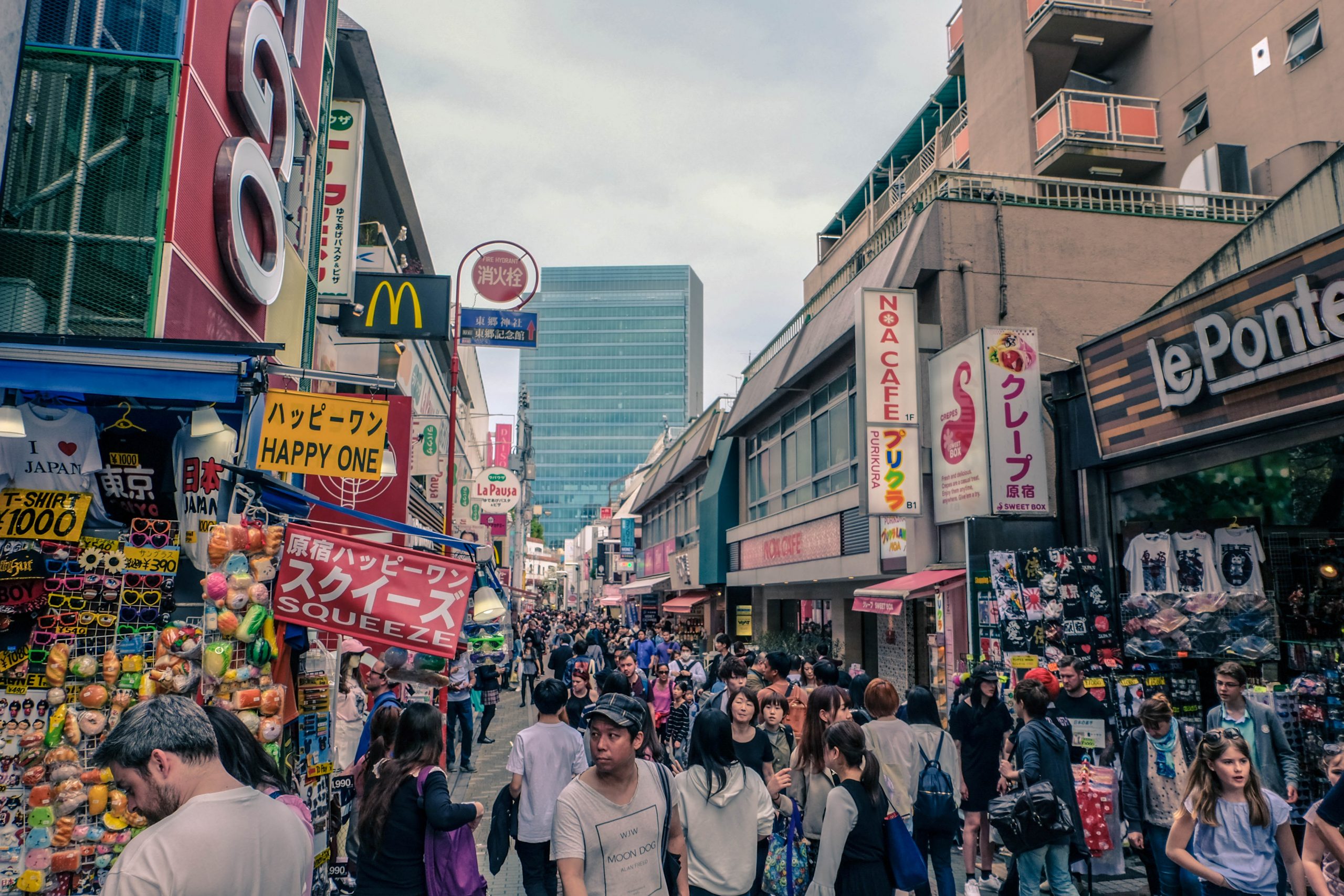
Takeshita Street is the most famous street in Harajuku. It’s a narrow lane lined with shops and small eateries. Takeshita is always alive with energy and colour, and usually packed to the brim with both tourists and locals. Just walk slow and stop along the way to grab sweets and souvenirs. It’s the place where you’ll also find the most number of colourful street foods, including rainbow cotton candy, rainbow cheese sandwich (yes, really!) and crazy crepes.
For a charming photo opportunity, right at the entrance of Takeshita Street, there’s a street camera with a screen attached. You can wave at it and snap a picture of yourself with the bustling Takeshita Street as your backdrop. It’s a clever and fun way to capture a memorable moment in Harajuku.
Harajuku Street
Hatajuku street is very different to Takeshita street, although it’s easy to mix the two given their proximity. Harajuku street is less about flamboyant youth culture and more about understated, edgy trends. It’s quieter and less crowded, with a vibe here is more laid-back, and that Tokyo sense of urban cool. If you love vintage shopping, you’ll find some awesome treasures here.
Omotesando
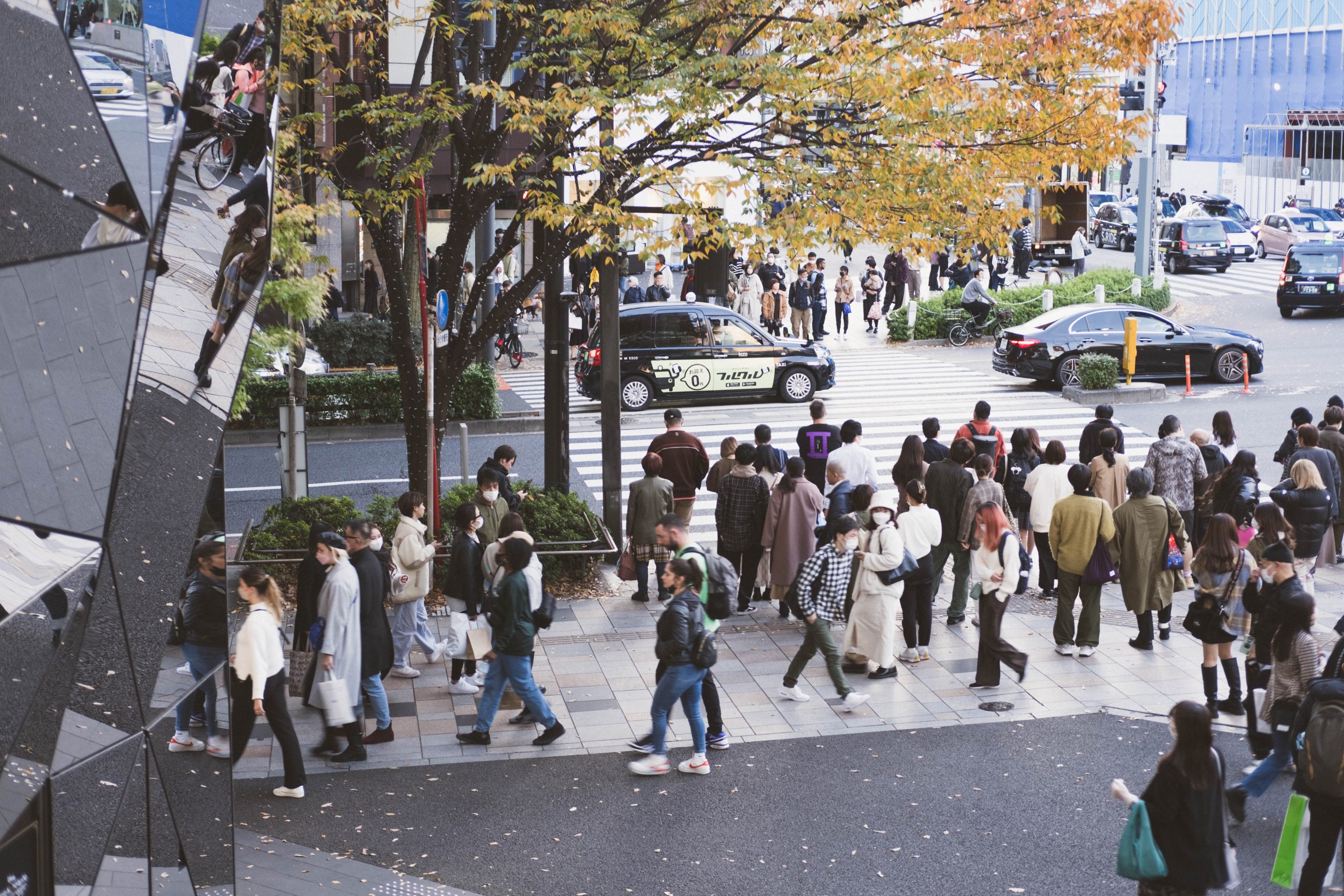
Omotesando is Harajuku’s upscale counterpart, often called the Champs Elysee of Tokyo. It’s lined with sophisticated shops and stunning architecture. If it’s shopping that you are after, Omotesando is a very good place to start. Sure, you’ll find an array of expensive retail shops like Louis Vuitton, Bulgari, Armani, but there are plenty of affordable plazas and malls too, like the Tokyu Plaza and Gyre Shopping Centre.
Cat Street
Cat Street excels in its variety of small boutiques and shops. These aren’t just your typical big brand names, instead, they are local brands that offer something different. If you are a fan of Converse, I do recommend heading to the White Atelier which takes white converse and creates all sorts of cool Japanese (and International) art on them. For more shopping exploration, you can find vintage clothing, handcrafted accessories, or artisanal goods.
Eat the most colourful food in Tokyo
For insta-worthy colourful dishes, Harajuku is your place. I’ve got to tell you that while a lot of the dishes look incredible, these foods were primarily made to look great. They are delicious but don’t expect them to blow your mind like other, more traditional Japanese food or elegant Japanese desserts.
Having said that, Harajuku is where you go out and play, and take fun pictures with your bestie.
Rainbow Cotton Candy at Totti Candy Factory
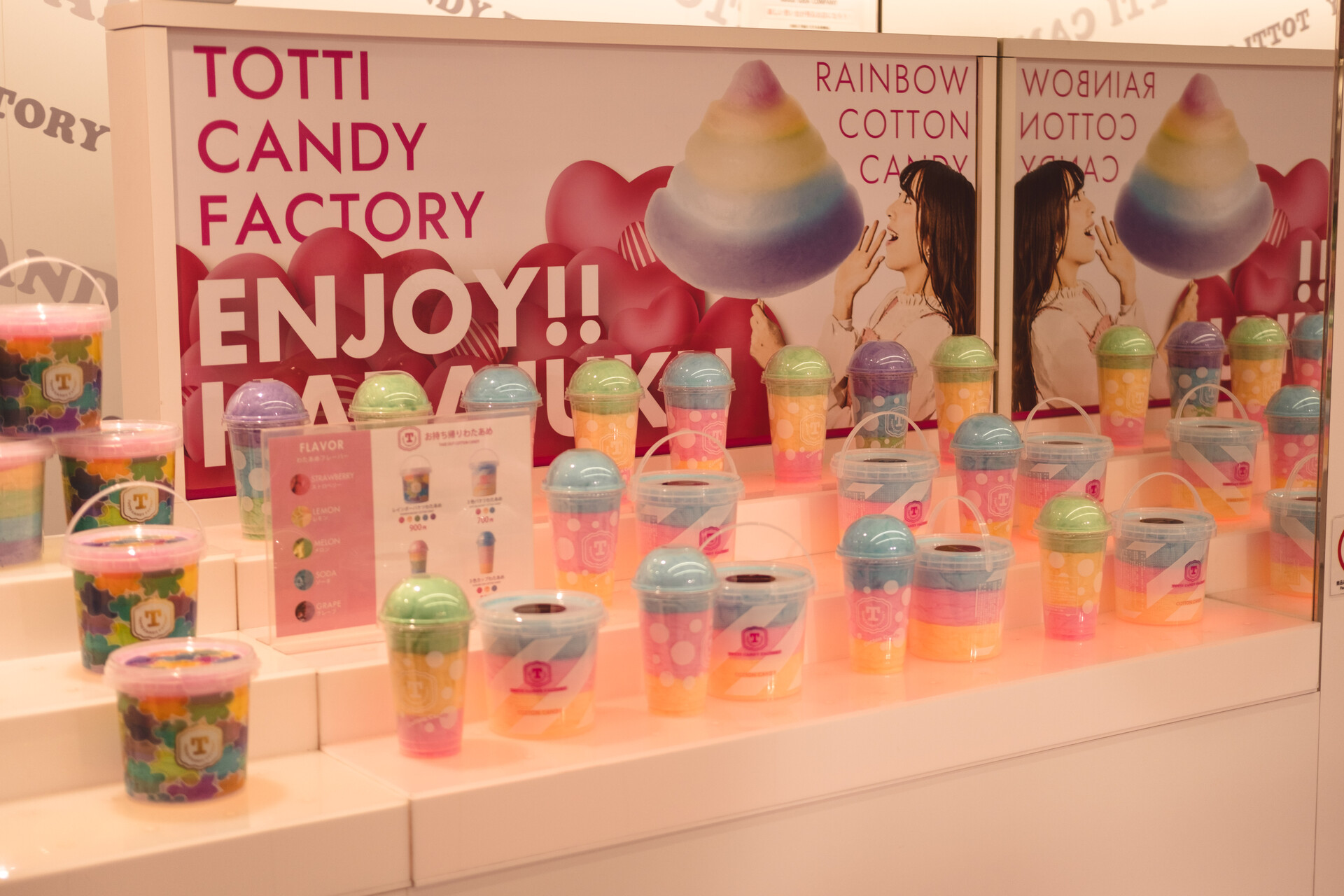
Just off Takeshita Street, Totti Candy Factory is renowned for its giant rainbow cotton candy. When you think Harajuku colourful food, this is the first thing that comes to mind. These fluffy clouds of sugar come in various colours and are a hit among both kids and adults. It’s not only delicious but also a visual treat, perfect for a fun photo. Expect long queues, but they go really fast.
Rainbow Cotton Candy Price: 1000 yen (inclusive of tax)
Address: RYU Apartment 2F, 1-16-5 Jingumae, Shibuya-ku, Tokyo150-0001
Opening Hours: 10 am–7 pm (weekdays); 9:30 am–8 pm (weekends)
Crepes at Marion Crepes
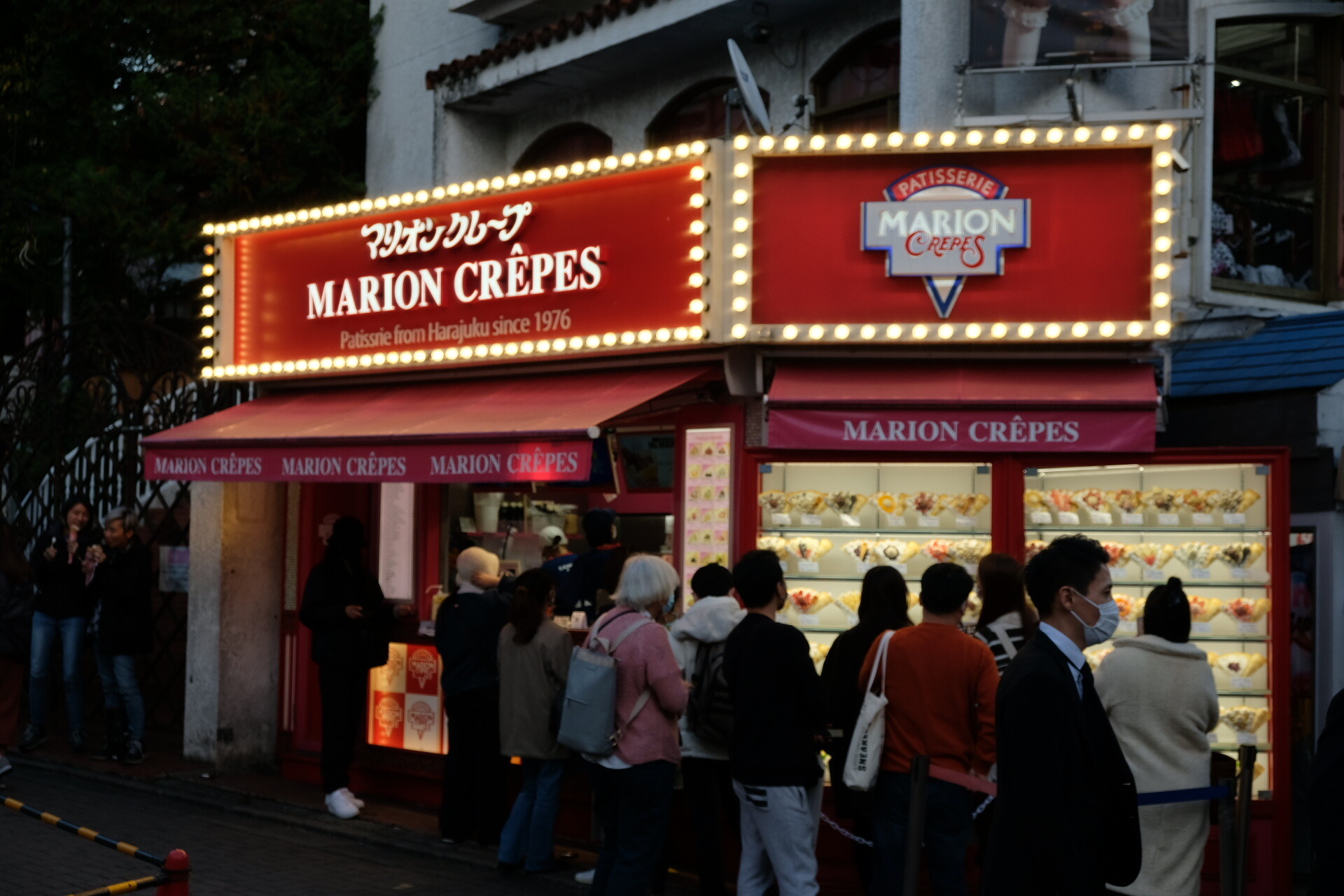
Marion Crepes, a staple in Harajuku, offers a wide array of crepes, each more colorful and packed with ingredients than the last. From fruits and cream to chocolate and ice cream, their crêpes are both a feast for the eyes and the palate. You’ll find this popular spot bustling with eager customers at almost any time of the day. My recommendation is to go for the matcha black honey crepe, which contains small shiratama (mochi balls) and matcha ice cream.
Price: 500+ yen
Address: Junes Building 1F, 1-6-15 Jingumae, Shibuya-ku, Tokyo
Opening Hours: 10:30 am–8 pm (weekdays); 10 am–8 pm (weekend)
Godiva Dessert
This is a real gem in Harajuku because it’s Godiva’s way of taking on the crazy crêpes. Their special crêpe (priced at 1300 yen) is generously filled with rich Godiva chocolate, including fondant chocolate and chocolate custard. It’s then topped off with chocolate whipped cream and chocolate ice cream. And for those who love customization, you have the option to add extra toppings to your crêpes, making them even more indulgent.
Price: 650 yen
Address: Re-Belle Harajuku, 4 Chome-31-11 Jingumae, Shibuya City, Tokyo 150-0001, Japan
Opening Hours: 10 am–8 pm
Le Shiner
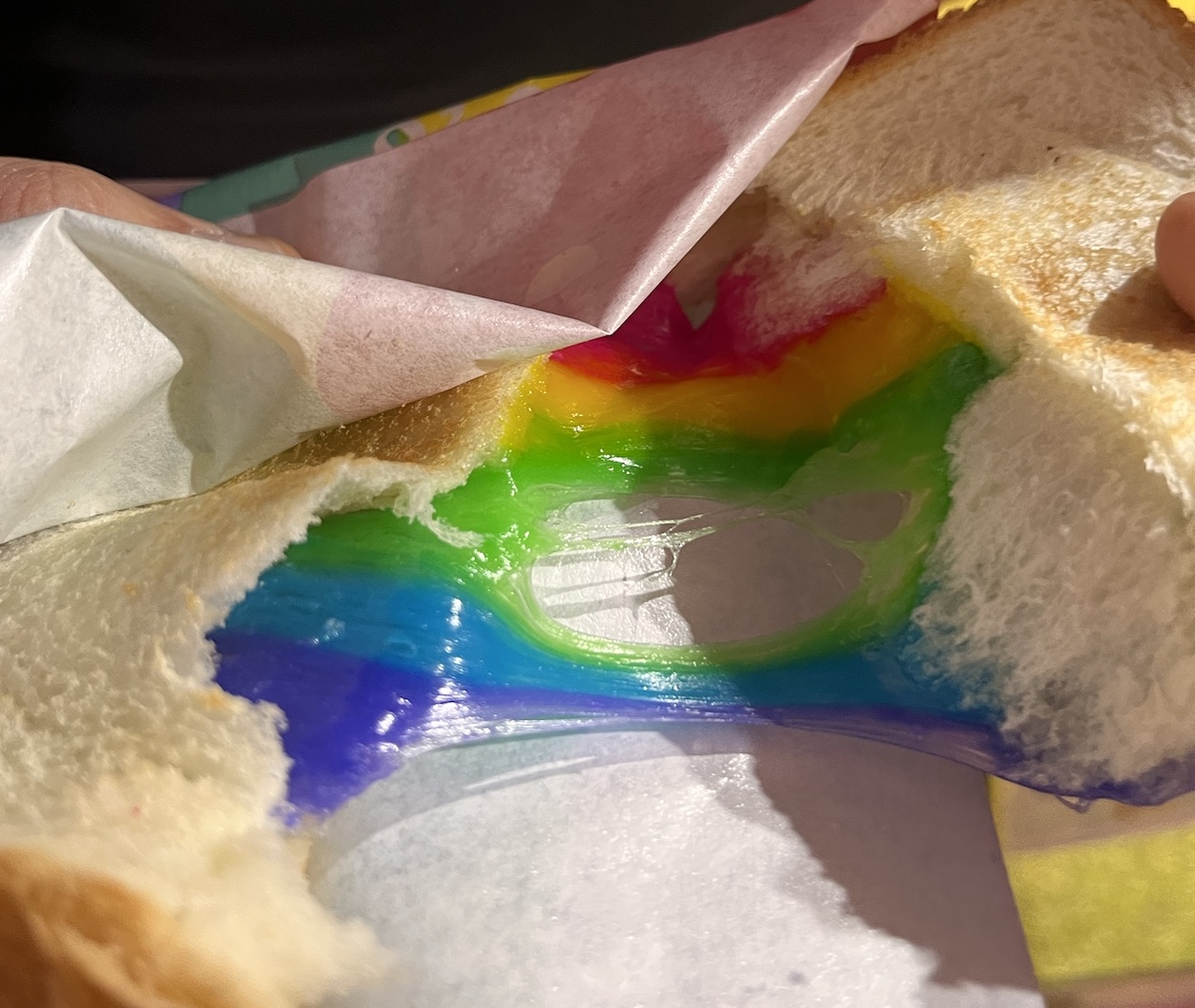
If you’re looking for something savoury yet colourful, Le Shiner on Takeshita Street serves up a rainbow grilled cheese sandwich. When you pull apart the slices, you’re greeted with a stretch of multicoloured cheese – it’s as tasty as it is Instagrammable. Le Shiner is a shop originally from Korea.
Bear in mind that while the products are colourful and awesome, the service can be a bit slow and maybe not the most upbeat.
Price: 500+ yen
Address: 1 Chome-7-10 Jingumae, Shibuya City, Tokyo 150-0001, Japan
Opening Hours: 11 am–6 pm
Strawberry Fetish
If you’re new to Japan, then you have to know that this nation is obssed with everything strawberry. There’s no surprise that you’ll find a speciality shop dedicated to everything strawberry. The most popular item on the menu is their sugar glazed strawberry served on a stick, which looks so inviting and photogenic. There are now two different shops located on Takeshita Street.
Price: 500+ yen
Address: 1 Chome-16-5 Jingumae, Shibuya City, Tokyo 150-0001, Japan
Opening Hours: 10 am–8 pm (weekdays); 9:30 am–8 pm (weekends)
Go on a retail spree in Harajuku
Harajuku is a dream destination if it’s shopping that you’re after. While you might think that the area is all about youthful and colourful fashion, there are plenty of great retailers that cater for a wider audience.
With Harajuku
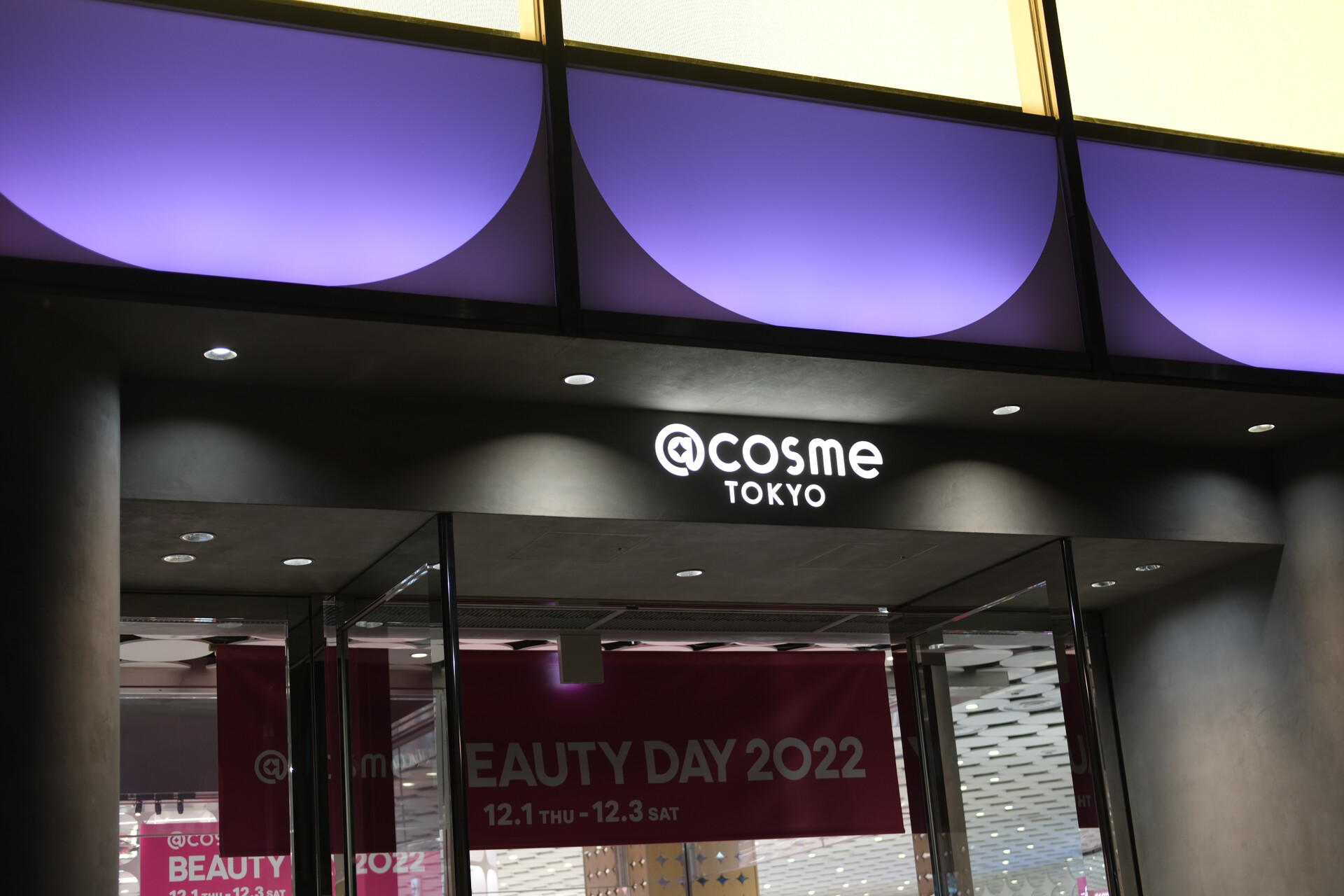
Just opposite the Harajuku station, you will find the With Harajuku retail complex, which houses a great range of Japanese shops. You’ll find Uniqlo, which is a popular choice for locals and tourists, an Ikea (yes, really!) a Dyson store and a DrMartens along others. Next door there is a large Cosme Tokyo store, perfect if you’re looking to grab all sorts of cosmetics. It’s my favourite place in Tokyo for buying cosmetics.
Address: 1 Chome-14-30 Jingumae, Shibuya City, Tokyo 150-0001, Japan
Opening Hours: 7:30 am–11:30 pm
Omotesando Hills
Omotesando Hills is a sophisticated shopping complex on Omotesando Avenue. It was designed by Tadao Ando and built in 2005 by the giant development company Mori Buildings.
Omotesando Hills houses a range of high-end brands and designer boutiques. The mall’s ambiance is upscale, and it’s a great place to find the latest in fashion, accessories, and beauty products. Beyond shopping, I recommend the Italian located on the 3rd floor called Fratelli Paradiso.
Address: 4 Chome-12-10 Jingumae, Shibuya City, Tokyo 150-0001, Japan
Daiso Harajuku – 100 Yen Shop
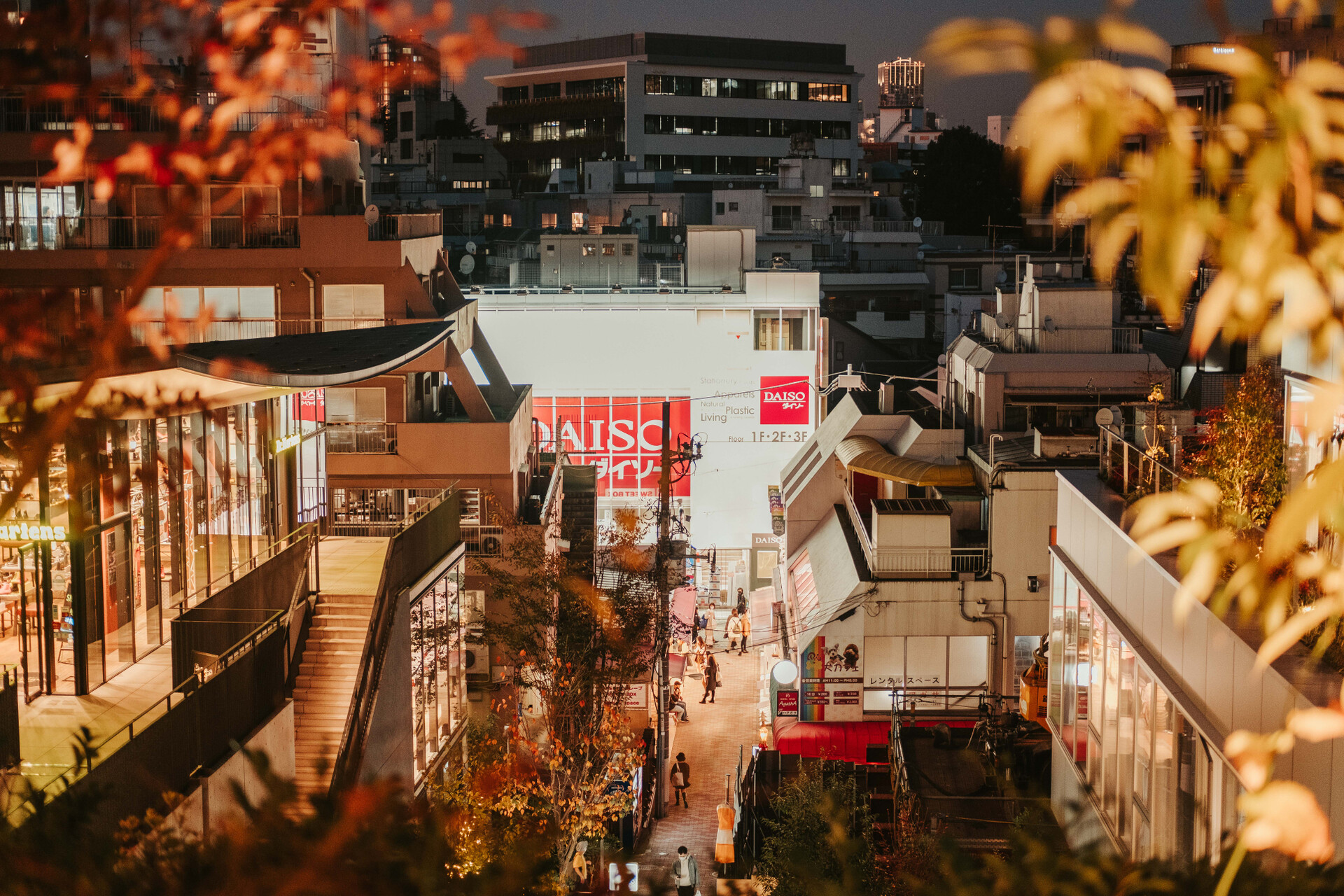
Daiso in Harajuku is a must-visit for anyone looking for affordable shopping. It’s a part of the famous 100 Yen shop chain, that sells a wide array of items from household goods to stationery and souvenirs, all at very low prices.
Address: 〒150-0001 Tokyo, Shibuya City, Jingumae, 1 Chome−19−24 ビレッジ107 2階
Opening Hours: 9:30 am–9 pm
LaForet Harajuku
LaForet Harajuku is a department store opened in 1978. It was also developed by the Mori Buildings. This shopping complex has six floors and two basements with 150 different shops. To visit the museum, head to the 6th floor. Take a break from shopping and head to the ovgo Baker located on the 2nd floor for some delicious vegan cookies.
Address: 1 Chome-11-6 Jingumae, Shibuya City, Tokyo 150-0001, Japan
Opening Hours: 11 am–8 pm
Tokyu Plaza Omotesando Harajuku
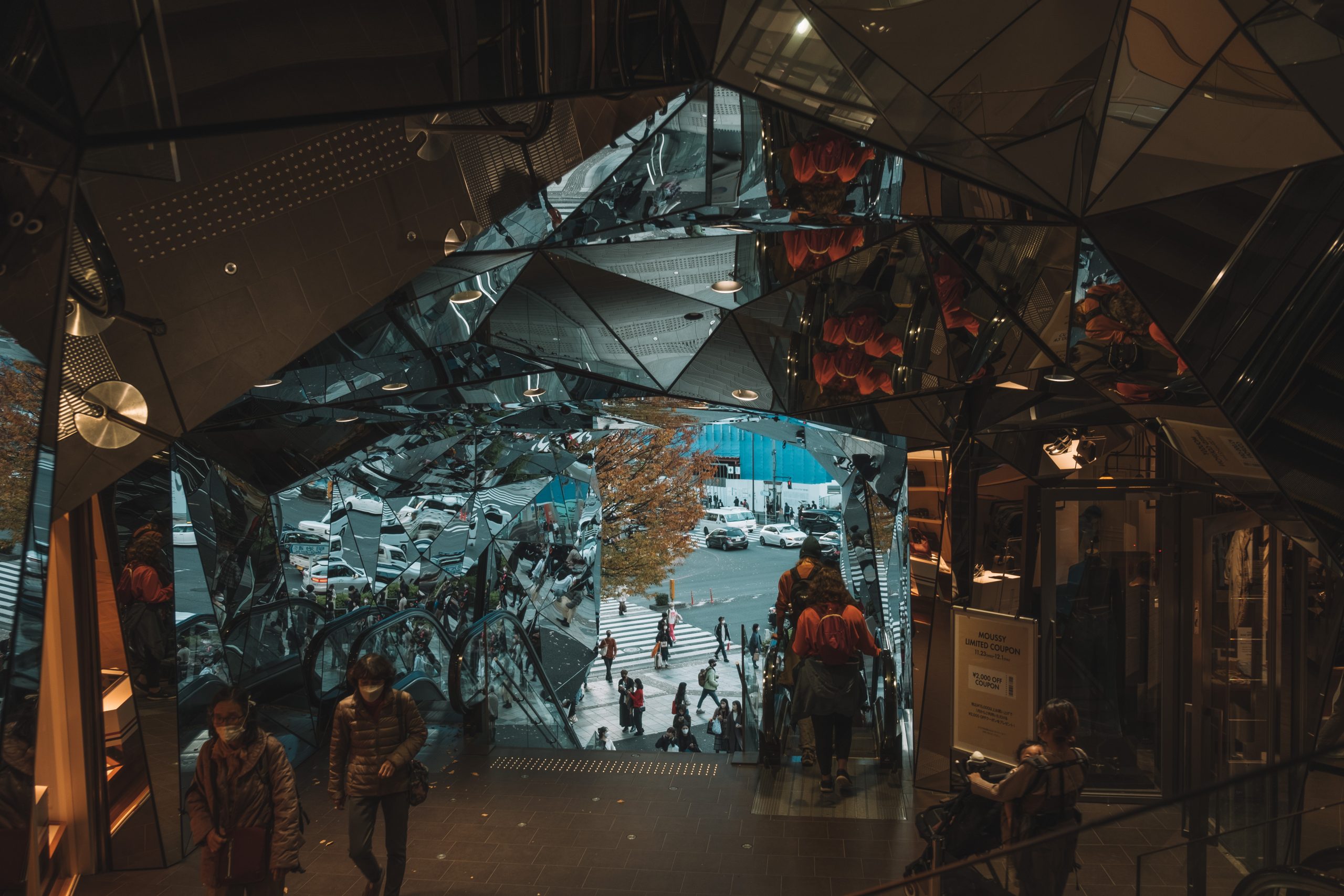
Tokyu Plaza, located at the intersection of Omotesando and Harajuku, is known for its mirrored entrance, which is a popular photo spot. Inside, you’ll find a mix of fashion brands and beauty stores. Head to the rooftop for amazing views of Harajuku from above. In the evening, this terrace is especially lovely as it has lots of greenery, wooden seats and beautiful fairy lights.
Address: 4 Chome-30-3 Jingumae, Shibuya City, Tokyo 150-0001, Japan
Opening Hours: 11:00 AM – 9:00 PM
Read More: Tokyu Plaza Omotesando Harajuku
Gyre Shopping Mall
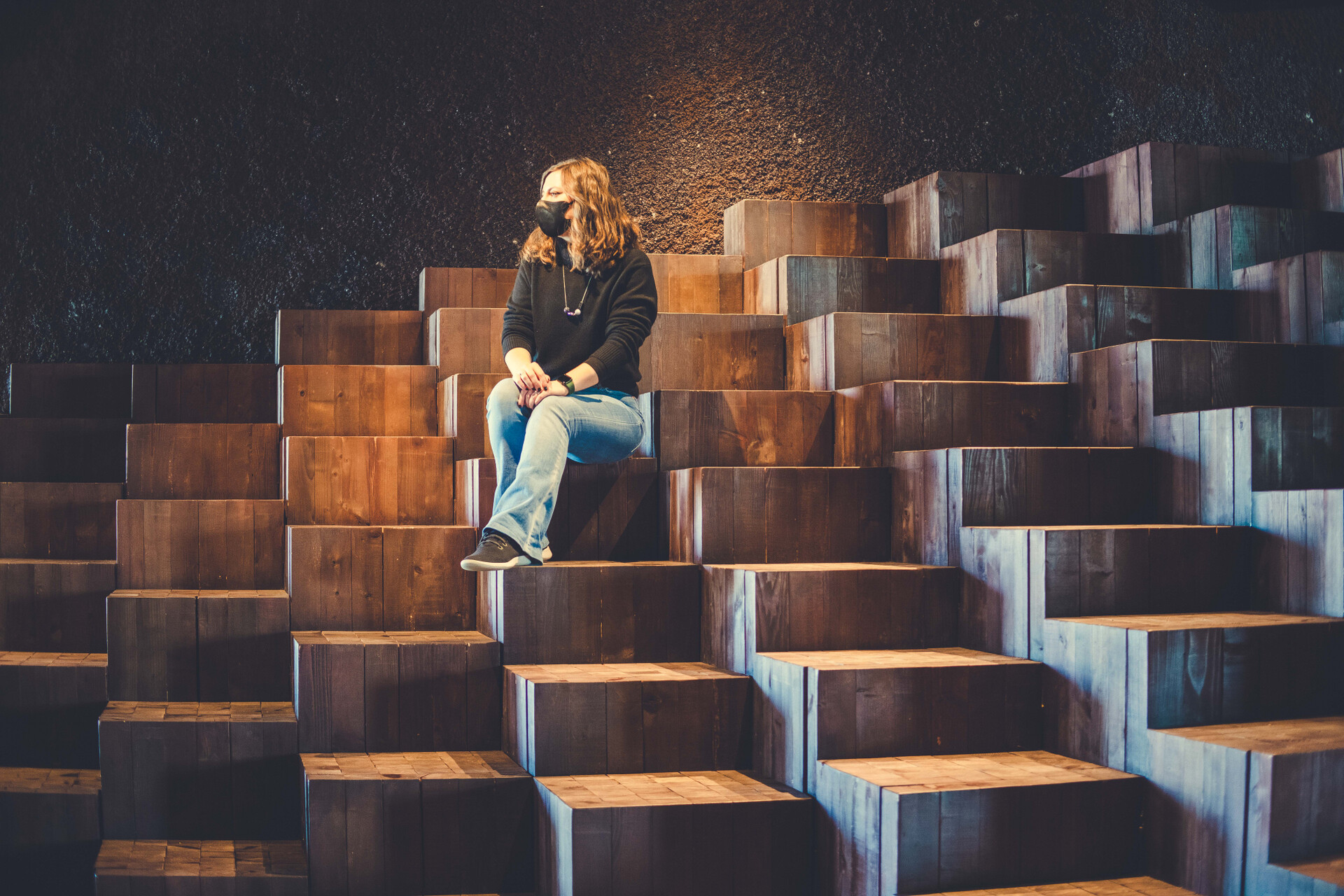
Gyre is a smaller but stylish shopping mall on Omotesando Avenue. It’s a more unusual place that focuses on art and unique statement pieces. Head to the basement and look around the furniture shop where you’ll see some of the most beautiful wooden and resin tables. There is also a cafe which specialises in lattes with Japanese floral honey. On the top floor the walls are designed to mimic the texture of soil, creating an earthy and organic atmosphere that’s quite unexpected in a shopping mall. The highlight here is the theater-like wooden stair that doubles as a seating area.
Address: 5 Chome-10-1 Jingumae, Shibuya City, Tokyo 150-0001, Japan
Opening Hours: 11 am–12 am
Harakado (opening in 2024)
Set to open in 2024, Harakado is an upcoming addition to Harajuku’s shopping scene. While specific details about the stores and offerings are yet to be fully revealed, the anticipation is high. It will be located right in front of the original Tokyu Plaza and its sister department store promises an even cooler rooftop garden with views over Harajuku.
Take fantastic coffee breaks
What if I tell you that Harajuku is one of the best places for coffee breaks in the whole of Tokyo. I might be biased because it’s close to my apartment, but I love wandering around Harajuku and discovering new places that perfected a cup of coffee. Coffee is a little different in Japan as most shops specialise on espressos or drip coffee. Don’t worry, you will still find lattes and flat whites, although do note that those are mainly made with actual dairy milk.
HUMAN MADE Cafe by Blue Bottle Coffee
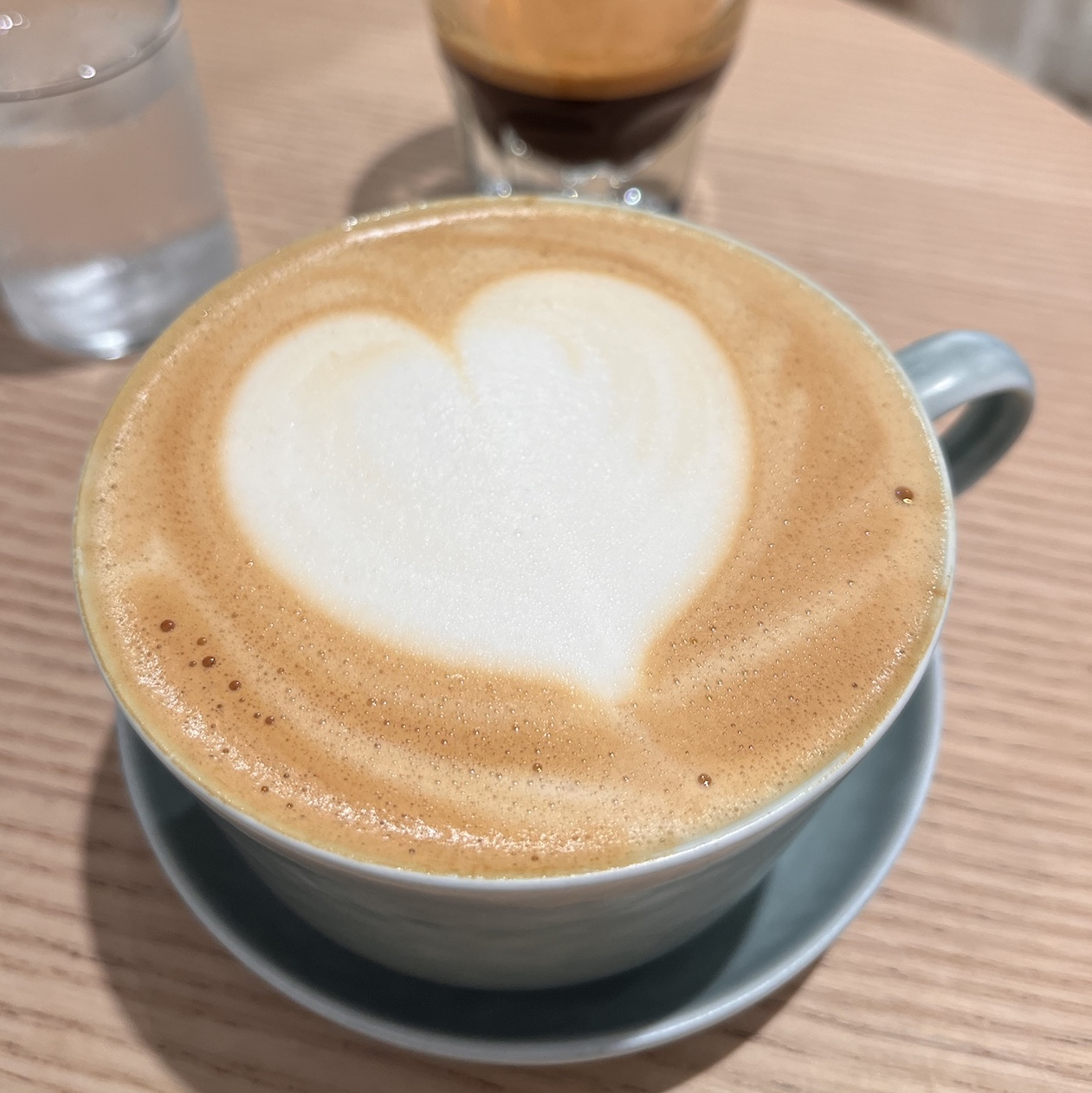
A spin off created by Blue Bottle that showcases how important humans are to well..just about everything. I honestly thought it’s an artsy retail store until I realised it’s an actual coffee shop ran by the minimalist chain Blue Bottle.
Address: Japan, 〒150-0001 Tokyo, Shibuya City, Jingumae
Opening Hours: 8 am–7 pm
CAFE REISSUE
One of the most popular coffee shops in Harajuku. It specialises in art lattes and yes, they really are Insta worthy!
Address: 3 Chome-25-7 Jingumae, Shibuya City, Tokyo 150-0001, Japan
Opening Times: 10 am–7 pm (Mondays closed)
SYNdicate cafe
This cafe offers a modern, stylish atmosphere. If you love hipster coffee shops then this is the place for you. Think concrete interior, minimalist seating area.
Address: 1 Chome-10-34 Jingumae, Shibuya City, Tokyo 150-0001, Japan
Opening Hours: 11:30 am–7 pm
Higuma Doughnuts × Coffee Wrights Omotesando
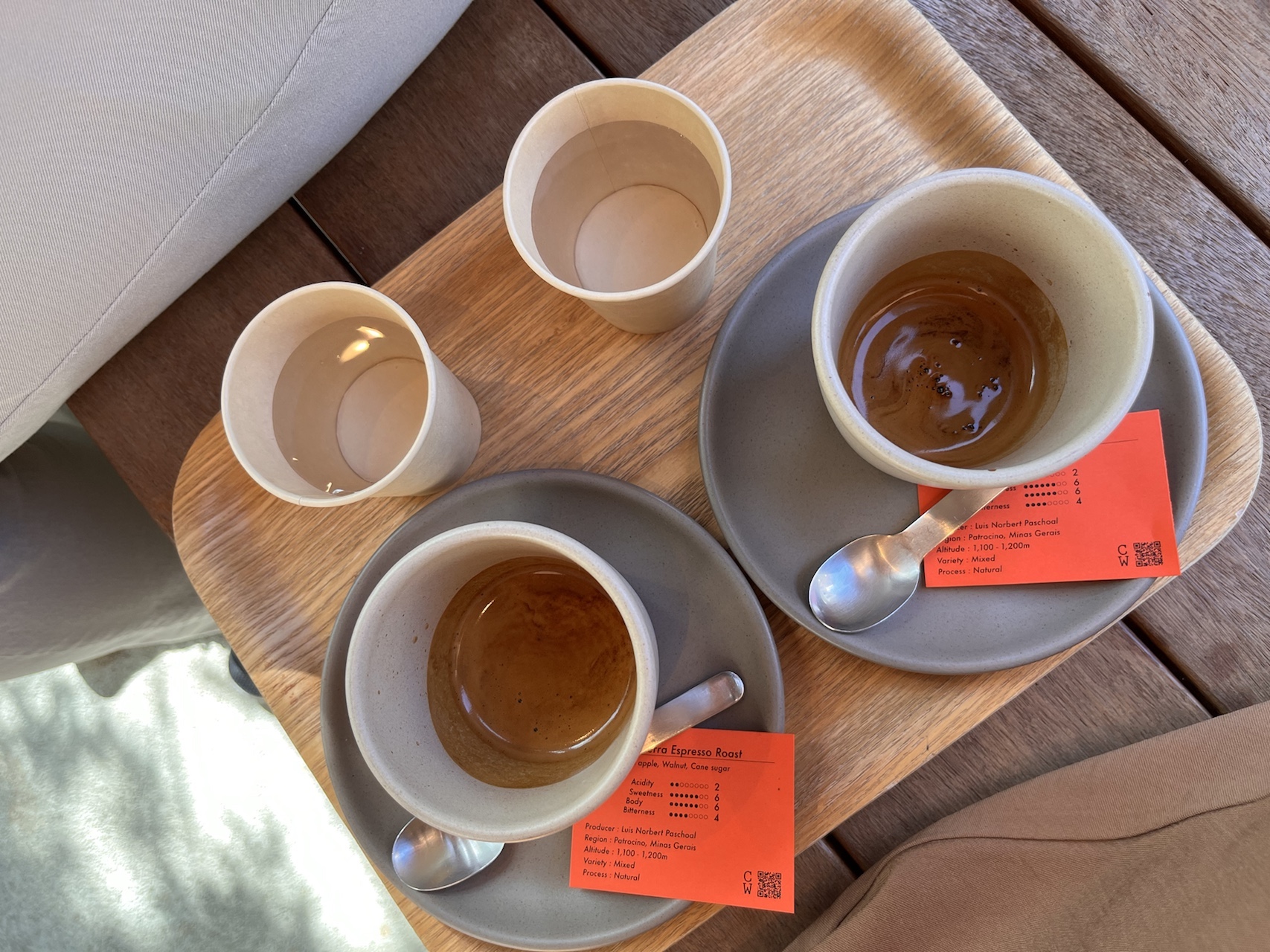
This was such an awesome find, a coffee place that makes amazing espressos and serves doughnuts on the side. You’ll drink your coffee in a sunken seating area with views of the green trees outside.
Address: Japan, 〒150-0001 Tokyo, Shibuya City, Jingumae, 4 Chome−9−13 ミナガワビレッジ #5
Opening Hours: 11 am–6 pm (Tuesday closed)
sorama coffee
Tiny, minimalist coffee shop that is a galley + coffee mix. It has very few seating areas indoors, but if you come on a sunny day, there is a long outdoor seating bench to enjoy your coffee and people watch.
Address: 1 Chome-12-6 Jingumae, Shibuya City, Tokyo 150-0001, Japan
Opening Hours: 11 am–4 pm (Tue – Fri)
KOFFEE MAMEYA
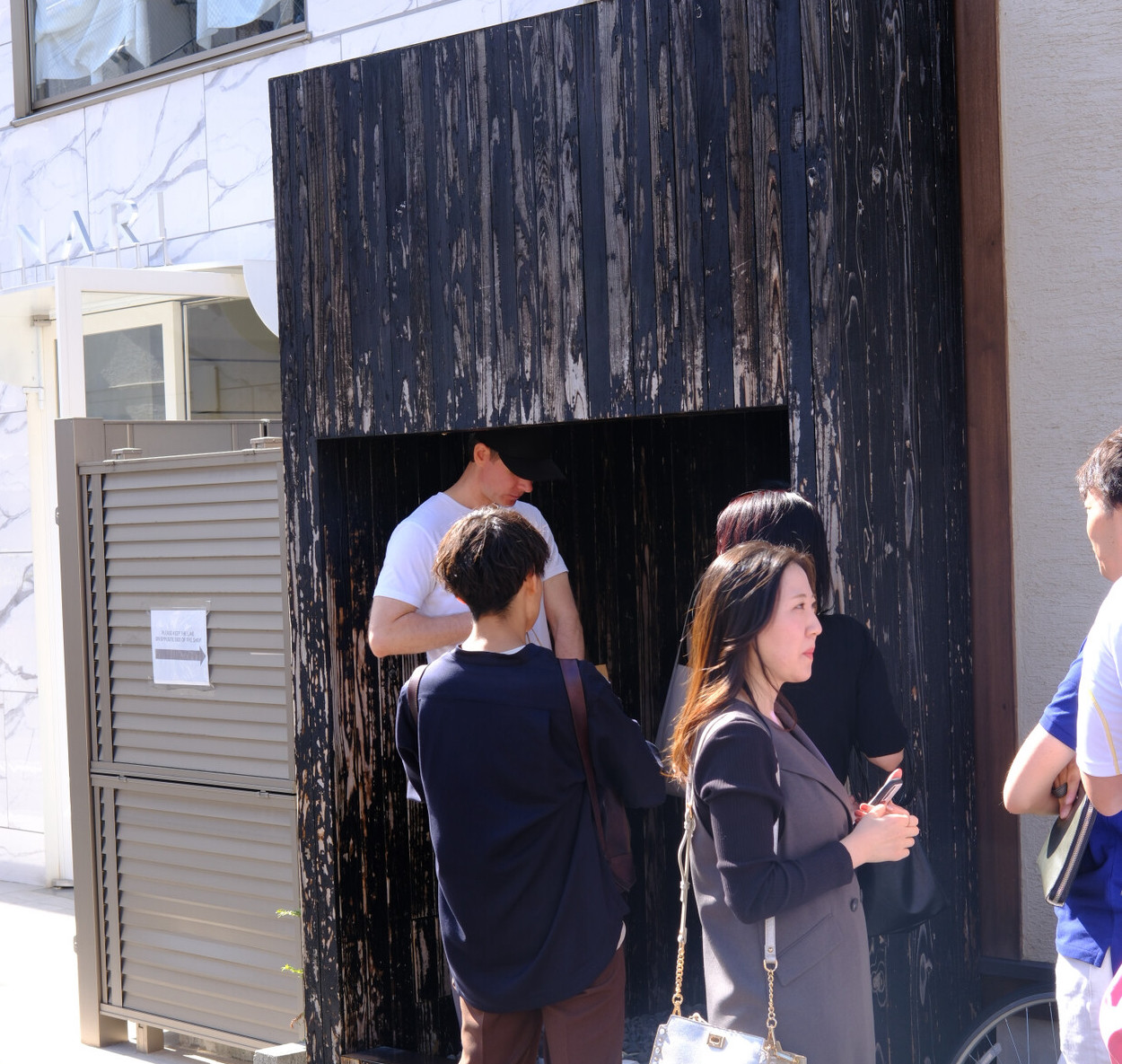
This has got to be the most popular coffee place I’ve ever been to. I waited in the queue for a good 25 minutes to grab my cup of coffee so just bear that in mind for when you decide to come here.
Address: 4 Chome-15-3 Jingumae, Shibuya City, Tokyo 150-0001, Japan
Opening Hours: 10 am–6 pm
Sarutahiko Coffee The Bridge
Great cafe for matcha lattes and oat lattes if you are looking for dairy alternatives. My favourite part is that they specialise in Barrel aged coffe.
Address: Japan, 〒150-0001 Tokyo, Shibuya City, Jingumae, 1 Chome−18−20, Harajuku Station, 3階
Opening Hours: 8 am–10 pm
CHOP COFFEE
This is a super super tiny coffee shop but their coffee packs a punch. I wholeheartedly recommend their almond milk latte. If you love a nutty coffee, go for their hazelnut latte, which is great year round.
Address: 5 Chome-11-13 Jingumae, Shibuya City, Tokyo 150-0001, Japan
Opening Hours: 11 am–7 pm
Eat traditional Japanese food
Harajuku might be the neighbourhood for colourful food, but did you know that it happens to have incredible traditional Japanese restaurants too? For example, my favourite tonkatsu restaurant, Maisen, happens to be in Harajuku. The Same goes for Afuri, a ramen restaurant I recommend everyone too!
Tonkatsu Maisen
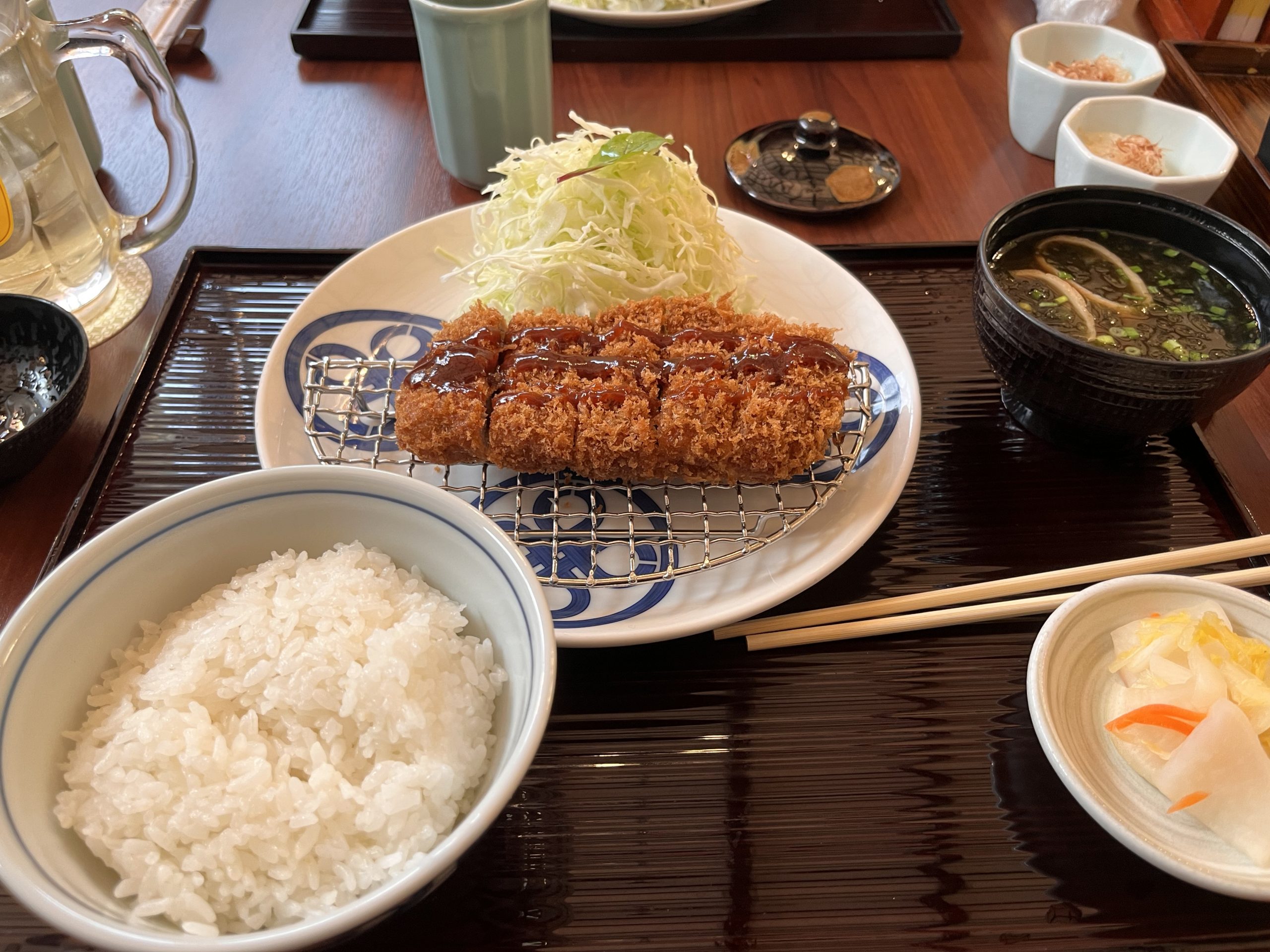
Maisen is a historic tonkatsu restaurant that has been in business since 1965. Not surprising, it is my favourite restaurant in Harajuku and one I am always happy to queue for. Maisen uses high-quality pork, expertly breaded in panko and served with rice, miso and shredded cabbage. Maisen has always a queue going, but it’s completely worth waiting for. It’s a large restaurant with many seating areas (including some upstairs) so you won’t be waiting for too long.
Afuri Ramen
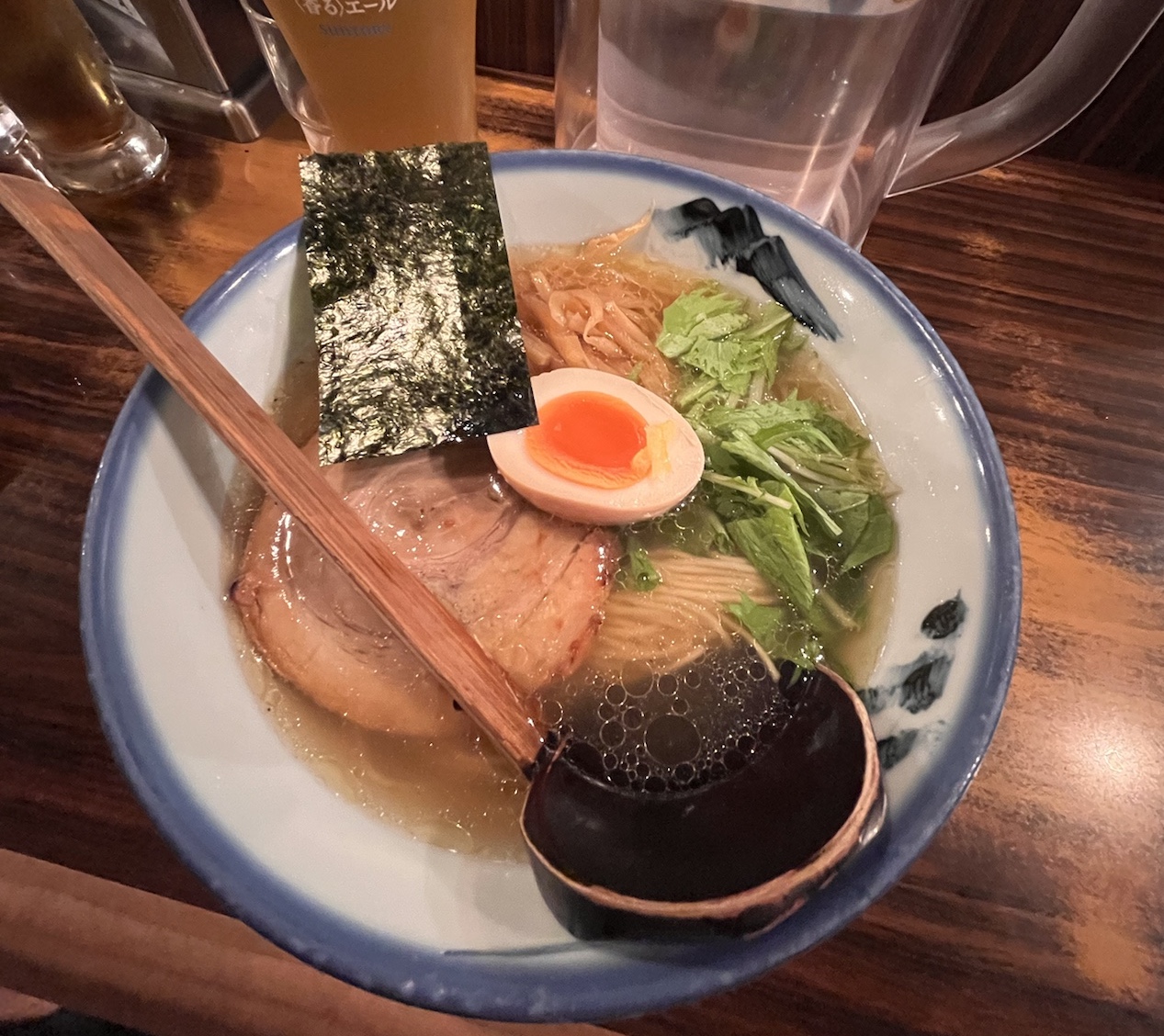
Afuri opened its first restaurant in 2016 (in Portland, USA!) and has been spreading like wildfire since. They now have 12 different restaurants, including one in Harajuku, Tokyo. Afuri specialises in yuzu ramen broth, which I promise you, it’s one of the best inventions since sliced bread. Their ramen is light, citrusy and so aromatic it’s unreal. To top it all up, you can also buy their yuzu infused beer which just makes yuzu enthusiasts like me very very happy indeed!
Afuri Harajuku is just a 5 minute walk from the Harajuku Station.
Kura Sushi
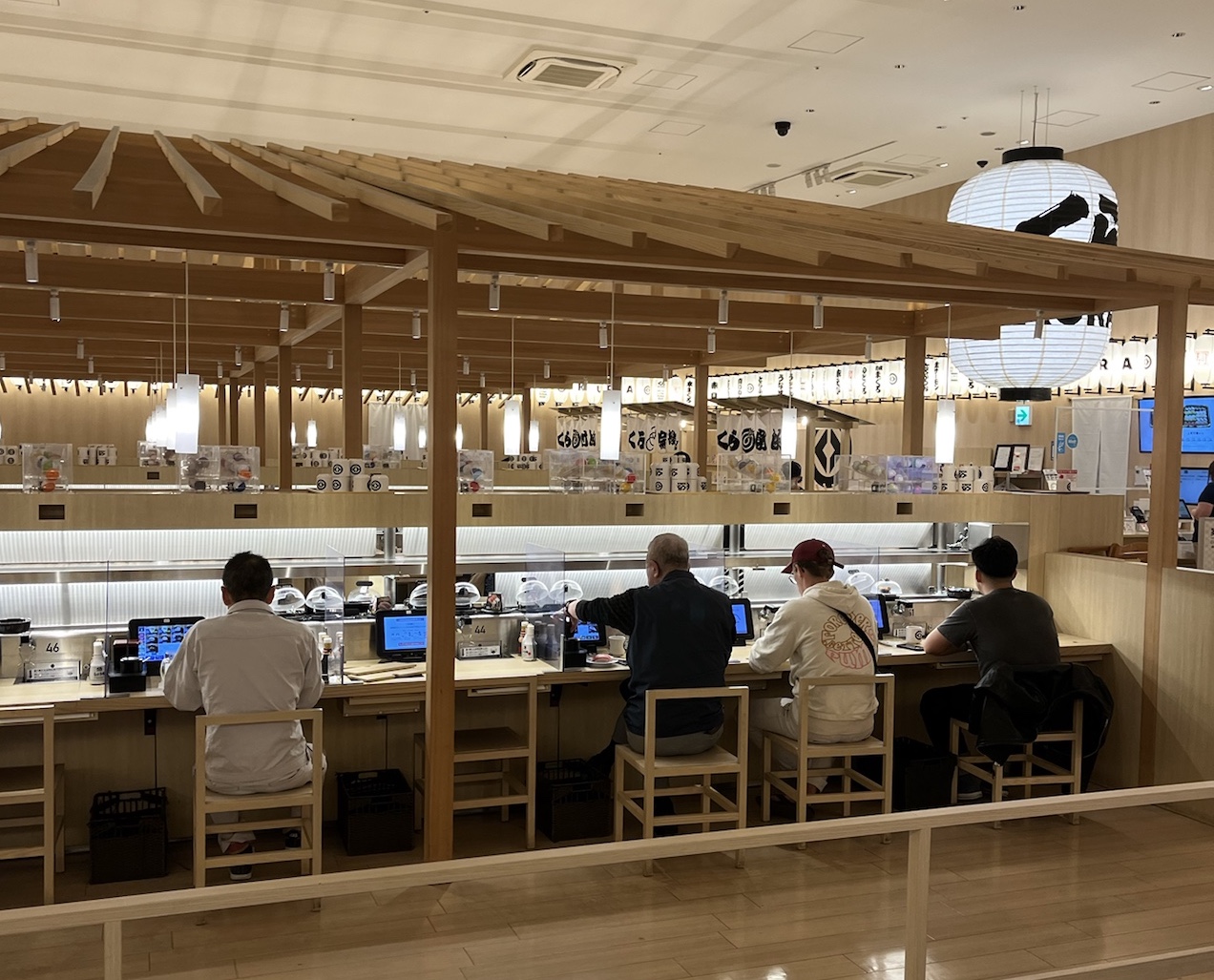
Yes, you can get conveyor belt sushi right in the heart of Harajuku. Kura sushi is all about offering cute semi-private booths with a special tablet so you can order your food fast and easy. There are several Kura Sushi stores in Tokyo, but the one in Harajuku is considered their flagship store. The more sushi you order, the more you get to play on their little gashapon machine.
Explore the green spaces of Harajuku
Harajuku also harbours serene green spaces that provide a peaceful retreat from the neighbourhood’s fast-paced rhythm. These include Yoyogi Park, a large area perfect for relaxation and outdoor activities, Meiji Jingu, a historic shrine surrounded by a forest and Meiji Jingu Gaien Ginkgo Avenue, famous for its stunning ginkgo trees.
Yoyogi Park
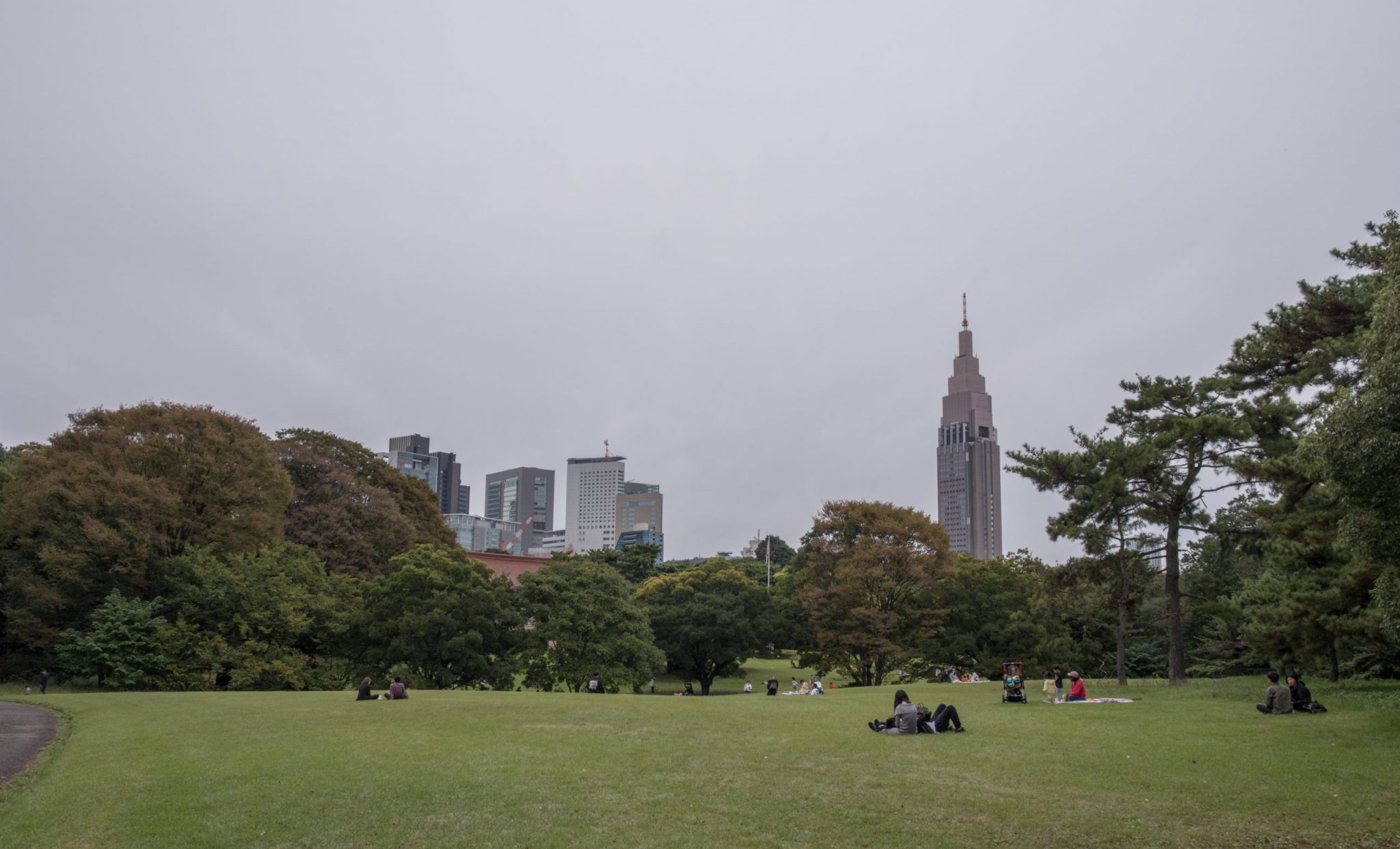
Yoyogi Park is one of Tokyo’s largest parks with expansive areas for picnics, jogging and leisurely walks. At the main entrance on the Harajuku side, you’ll find the Parks Harajukumon, a small kiosk which sells ice cream and other small treats. If you visit on a summer day, their muscat ice cream is a must!
The park features beautiful ponds, wide lawns, and forested areas. On weekends, it becomes a hub of activity with street performances and musicians. One of the most popular bands are the Strangers, who perform the Rockabilly Dancers every Sunday.
In spring, Yoyogi Park is a popular spot for cherry blossom viewing, because it is home to numerous sakura trees.
Yoyogi Park is open 24 hours, and it’s free of charge to enter.
Meiji Jingu
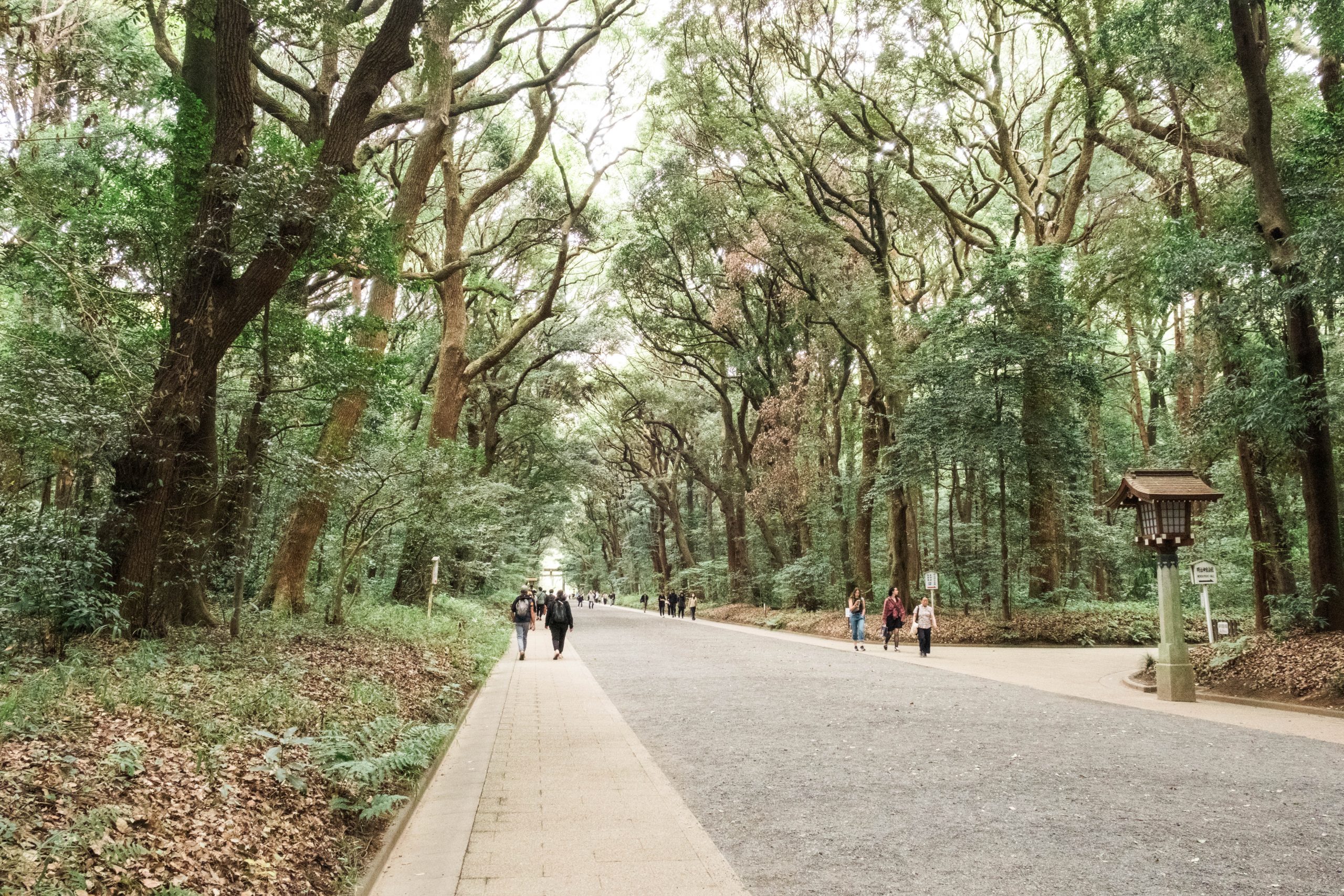
Meiji Jingu is dedicated to Emperor Meiji and Empress Shoke and is one of the most important shrines in Tokyo. The shrine was established in 1920 and holds great historical and cultural significance. Emperor Meiji played a crucial role in Japan’s modernization in the late 19th century.
The shrine is surrounded by a dense forest with over 100,000 trees, donated from regions across Japan. This forest is home to many walking paths, although the main gravel one leads you directly to the shrine.
Entry fee: Free
Address: 1-1 Yoyogikamizonocho, Shibuya City, Tokyo 151-8557, Japan
Opening Hours: 9 am–4:30 pm
Read More: Meiji Jingu
Meiji Jingu Gaien Ginkgo Avenue
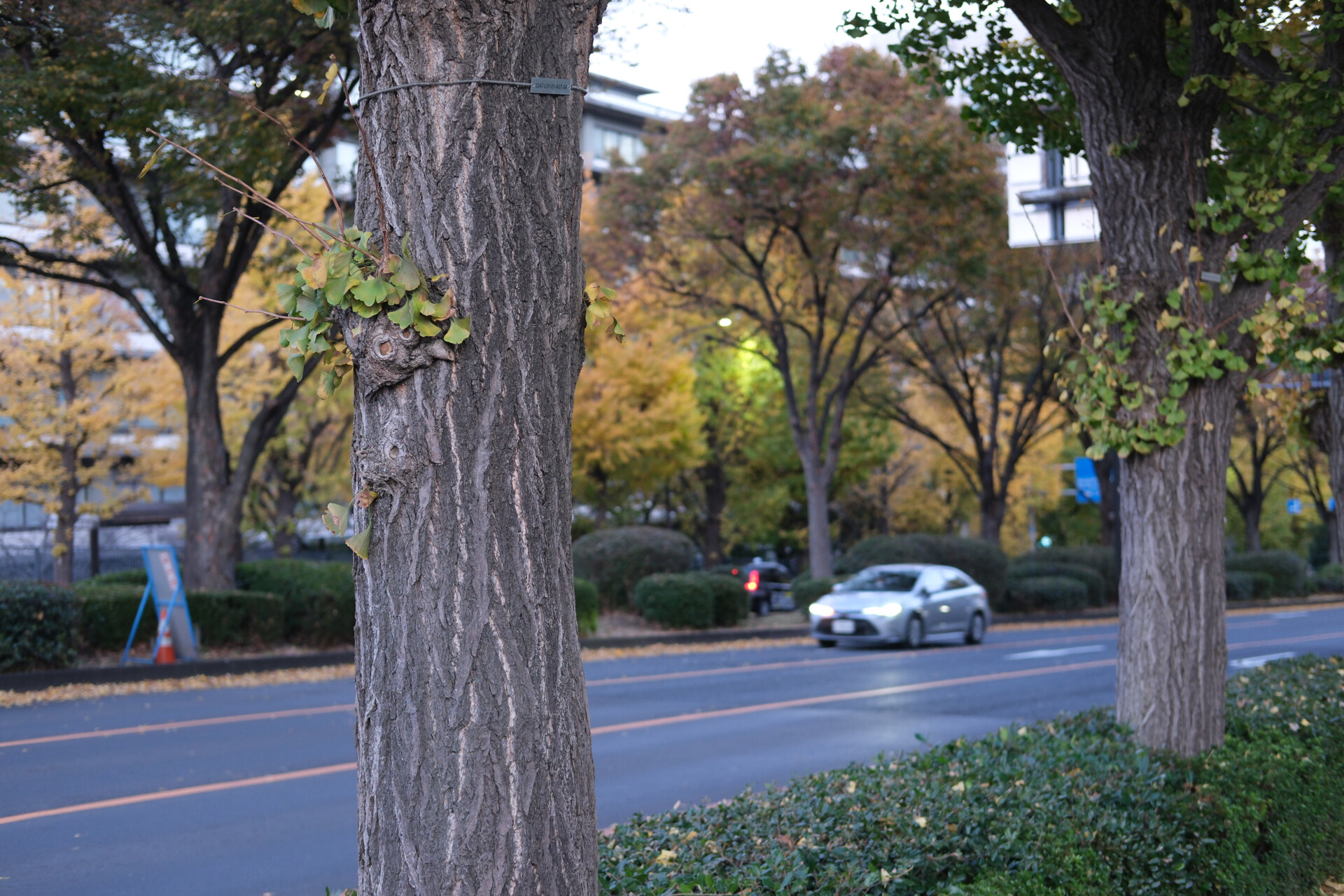
Meiji Jingu Gaien is known primarily for its wide avenue lined with 150 ginkgo trees. In late November, these trees turn a brilliant yellow, making it a favourite spot for both tourists and local to view the autumn foliage.
While walking down this avenue during the peak autumn season is an unforgettable experience, this is a spot I recommend visiting year around. It’s really beautiful and peaceful, especially after dark.
When you get tired, take a seat on the terrace at SHAKE SHACK Gaien, where you’ll have a meal under the ginko trees.
Entry Fee: Free
Address: 1-1 Kasumigaokamachi, Shinjuku City, Tokyo 160-0013, Japan
Opening Hours: 24/7
Check out Harajuku’s coolest rooftops
Harajuku is colourful and playful, but did you know it has several cool rooftops too? While they are not as tall as other parts of Tokyo, these places are perfect for seeing Harajuku from above. Here are my top Harajuku rooftop spots.
Tokyu Plaza Omotesando Harajuku (Omohara Forest)
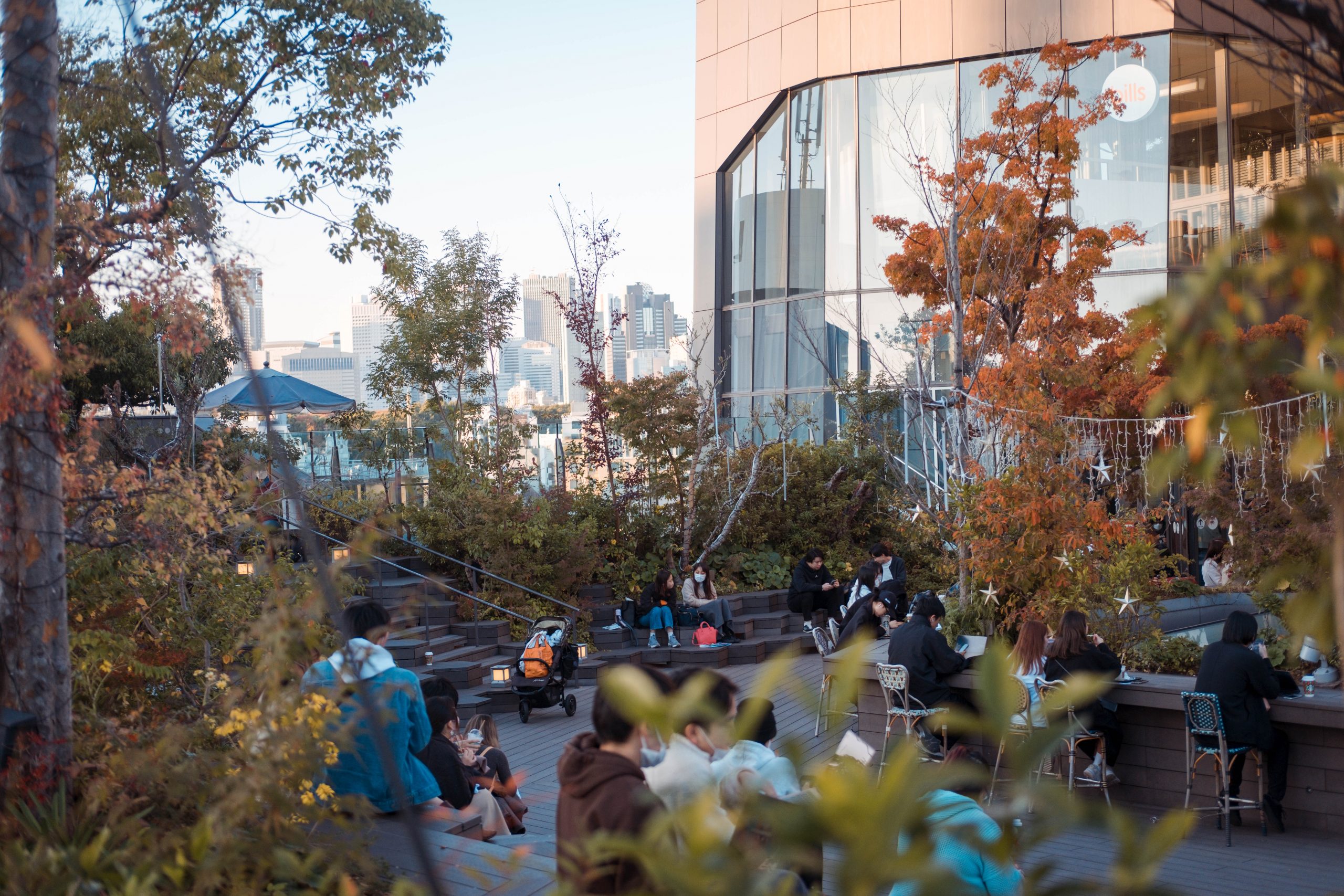
Tokyu Plaza has arguably the best rooftop garden in the neighbourhood. I might be biased because I first discovered this in 2015 and have been coming back ever since. It’s perfect because it has many seating areas, and it features a lot of greenery. At night, you can relax with a coffee and get all cosied up under the fairy lights. In the summer, there is an outdoor bar there too.
Omohara Forest is located on the 6th floor of Tokyu Plaza Harajuku.
Opening hours for Omohara Forest are: 8:30 – 21:00.
Bar Soak
Bar Soak is a cool rooftop restaurant with music. It’s like a relaxed lounge with stunning views over Tokyo. It opens at 6pm so you’re guaranteed some really nice and colourful views of Tokyo at night.
GYRE
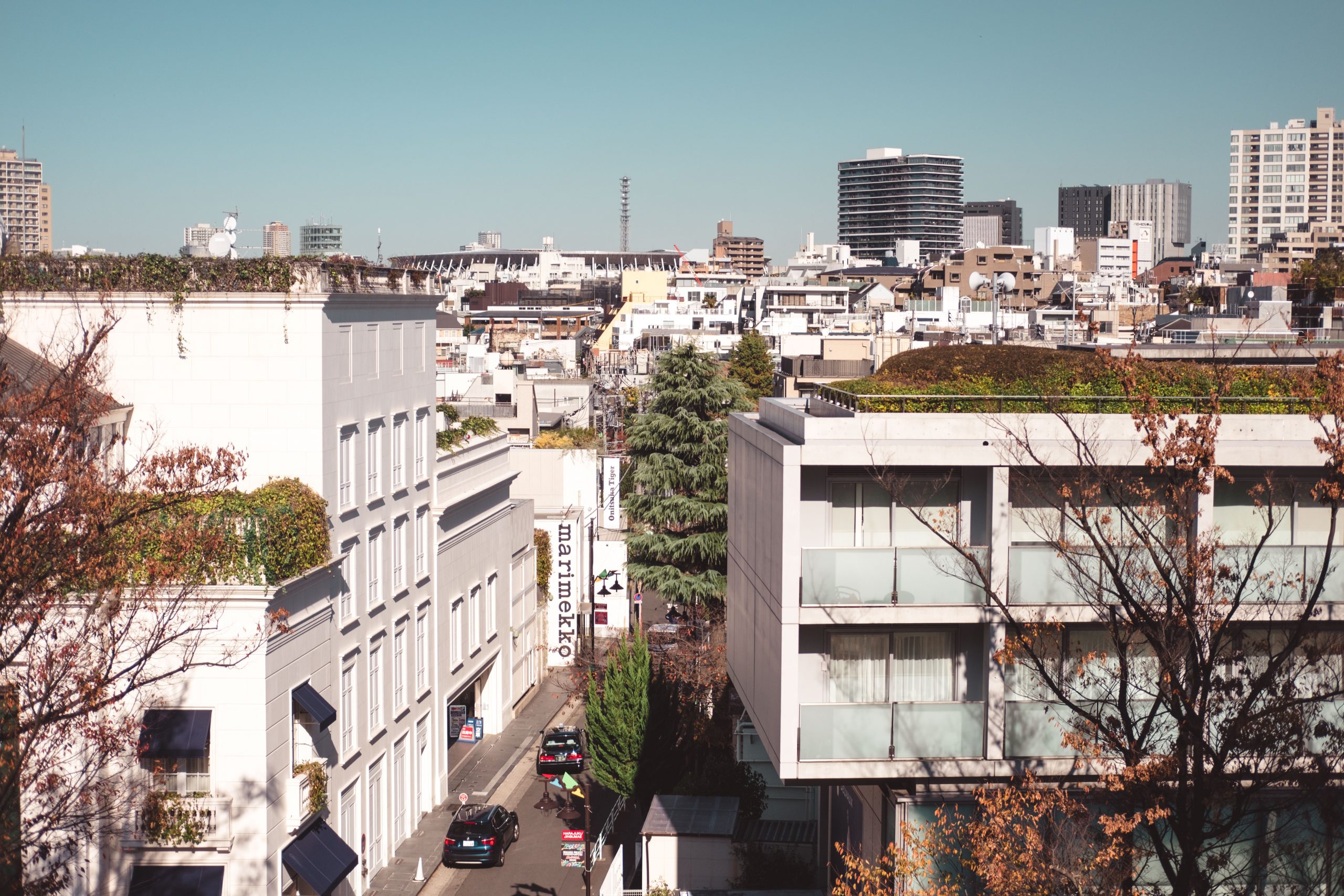
Head to the 5th floor in Gyre department centre and head outside to admire views of Omotesando Avenue. Purchase a coffee and treat from Gyre Food, or sit down for a fancier meal at the Ukai-tei restaurant. For the best views, you’ll want to take a seat on the terrace.
TWO ROOMS Grill
Two Rooms Grill is the ideal choice if you’re looking for an upscale meal with gorgeous views over Harajuku. Sit down on the terrace, which overlooks the city. To access, you’ll need to make your way to the Ao Building and head to the 5th floor.
Admire modern architecture
Architecture lovers rejoice, as there are plenty of really cool buildings to admire in Harajuku. I love hunting for cool and unique buildings, so I truly understand the desire to see something awesome. Well, Harajuku doesn’t disappoint.
For an even greater experience, book a private Harajuku architecture walking tour.
Omotesando Hills
It is a sleek and modern shopping complex designed by renowned architect Tadao Ando. Its design is a blend of minimalism and sophistication, with a focus on natural light and open spaces.
Location: Along Omotesando Avenue.
Prada Building
An iconic glass structure with a distinctive geometric design. The building, designed by Herzog & de Meuron, is a standout for its unique use of glass blocks and an irregularly shaped facade.
Location: Near Omotesando intersection.
Nezu Museum
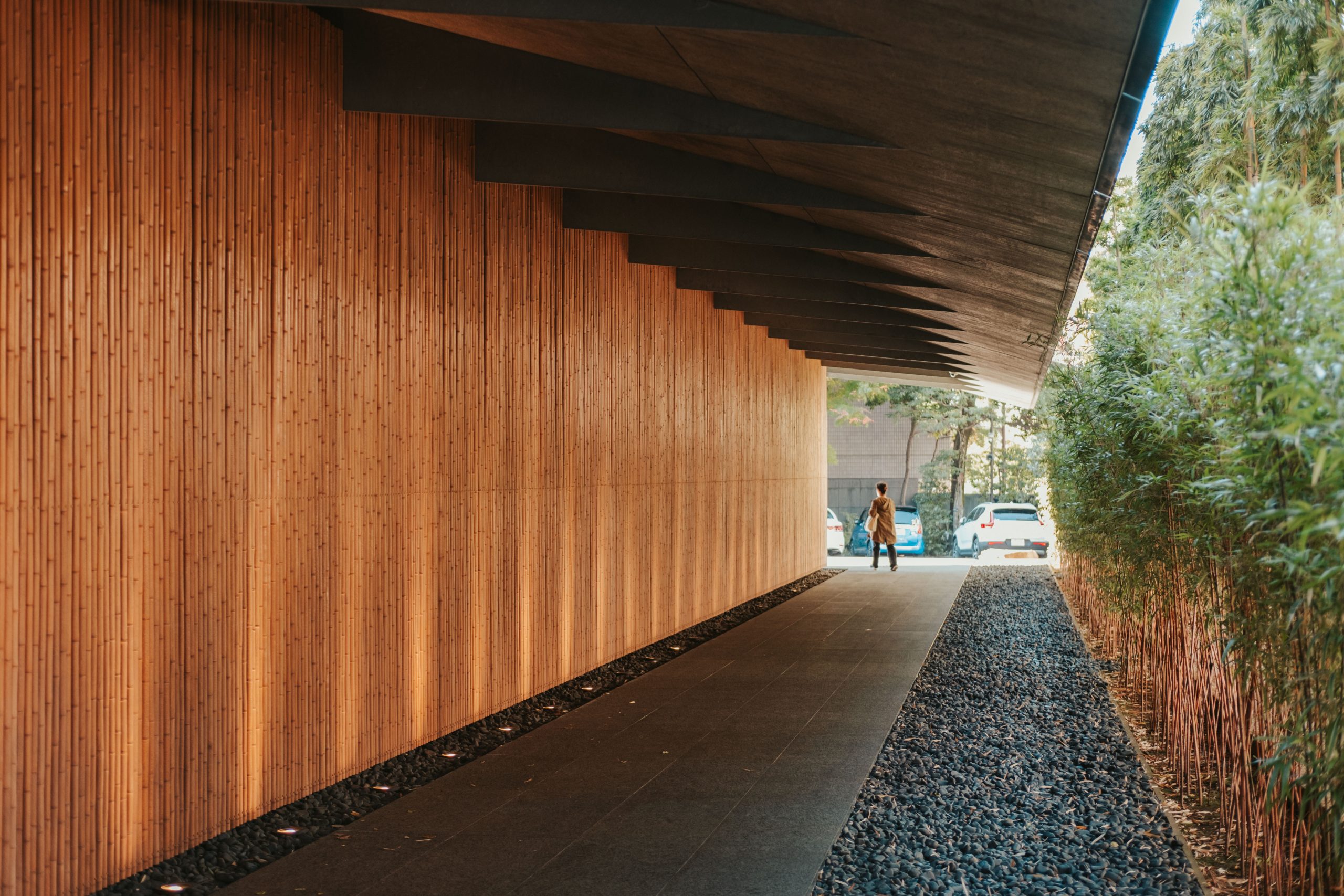
A stunning example of modern Japanese architecture, designed by Kengo Kuma. The museum blends traditional and contemporary elements, with a beautiful Japanese garden complementing the building.
Location: A short walk from Omotesando Station.
Dior Omotesando
Designed by SANAA, this building is noted for its translucent facade, which creates a delicate, ephemeral appearance. It stands out for its modern and elegant design.
Location: On Omotesando Avenue.
Tokyu Plaza Omotesando Harajuku
Known for its mirrored entrance, often referred to as the “kaleidoscope.” The building’s facade and rooftop garden offer a unique and modern aesthetic.
Location: At the entrance of Omotesando and Harajuku.
Sunny Hills
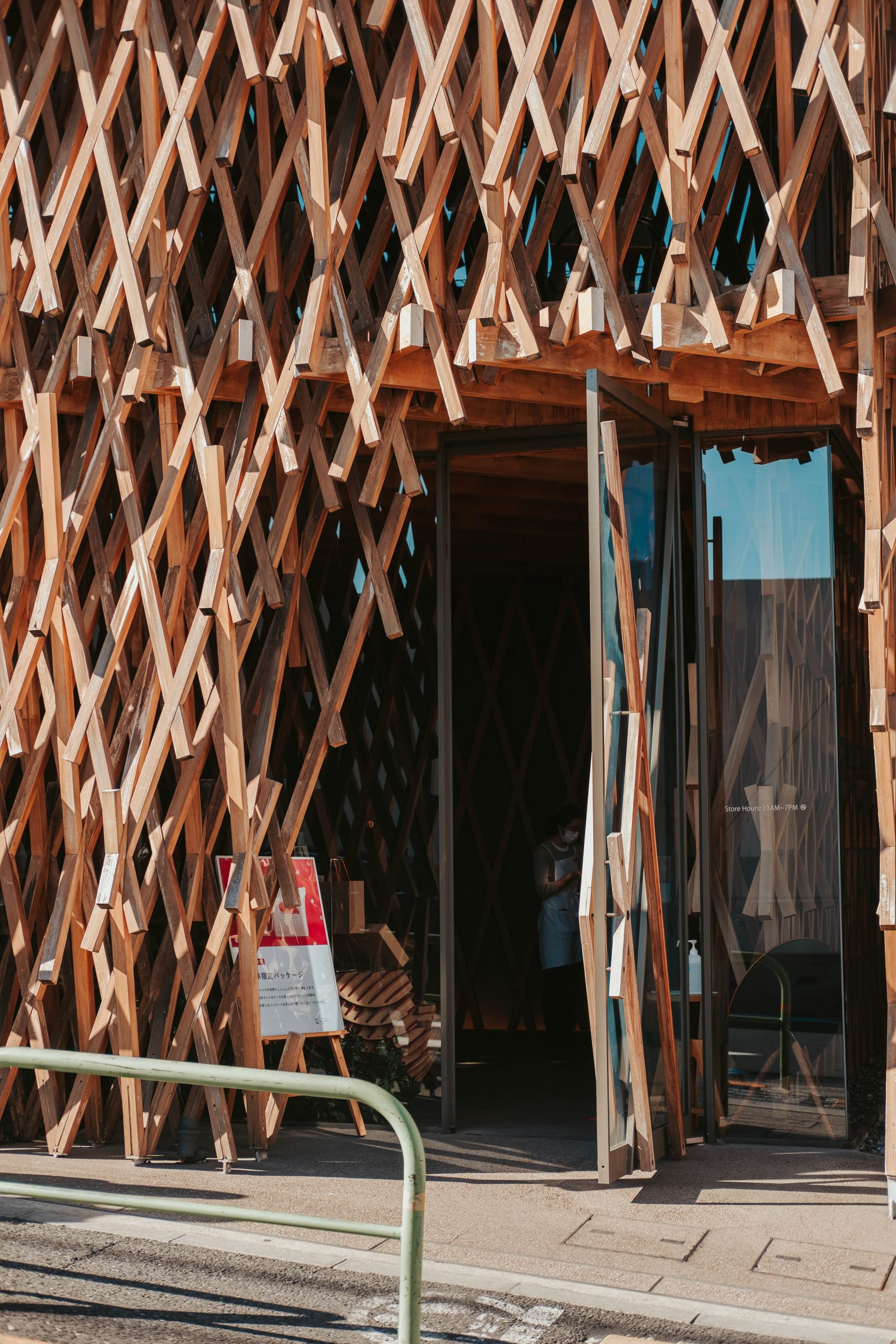
Designed by the renowned architect Kengo Kuma, the SunnyHills building is a masterpiece of modern architecture. The structure is made from intricately interwoven wooden lattices, creating a striking exterior that resembles a bamboo basket.
Location: 5 minute walk from Omotesando Station
Gyre
The building has a modern design with a twisted structure that resembles a gyre, giving it a dynamic and eye-catching appearance. The top floor has stunning walls which resemble soil, which makes it unique and special.
Location: On Omotesando Avenue
Omotesando Branches
Omotesando Branches, designed by the acclaimed architect Sou Fujimoto, is a notable architectural site in Tokyo. The building’s design features a complex interplay of geometric shapes and glass, resulting in a visually striking façade. Sou Fujimoto is known for his distinctive approach to architecture, often blending elements of nature with contemporary design.
Location: Address: 6-13-8 Jingumae, Shibuya-ku, Tokyo
Dear Jingumae Building
Dear Jingumae, situated in the backstreets of Omotesando, Tokyo, is a standout example of architectural rejuvenation. Originally, a 25-year-old office building, it underwent a complete transformation to serve commercial purposes, with a focus on creating a unique façade that would assist in branding for future tenants. The key feature of the new design is the use of metallic louvres, crafted using computer-aided design to create an impression of soft clothing. These louvres, with their three-dimensionally misaligned radii, add a modern and soft expression to the building
Go on tours with locals
Harajuku is a pretty big neighbourhood with plenty going on and lots of things to do. Sometimes it’s nice to just relax and let an experienced local take the reins. There are a few tours I recommend for visitors to Tokyo.
Half-day Kawaii Tour in Harajuku
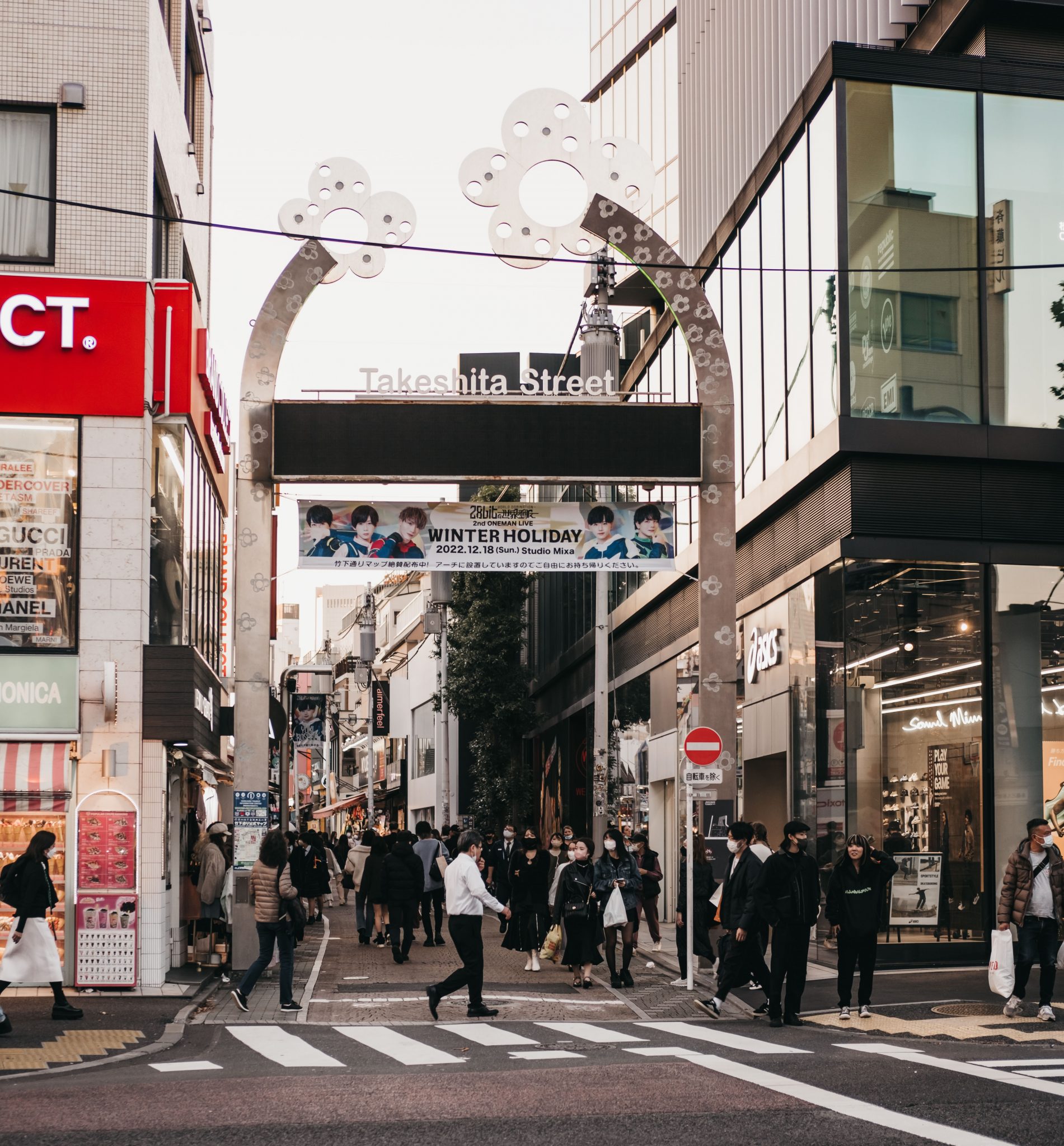
Kawaii is everywhere in Harajuku, but with a tour guide, you don’t need to hunt for it, they take you to the right spots, for all the right photos. During this tour you’ll walk down Takeshita Street, shop for ‘kawaii’ (cute) souvenirs, stop at an Owl Café and 3D latte art cafe all while admiring the local street art
Harajuku Kawaii Fashion & Pop-culture Tour
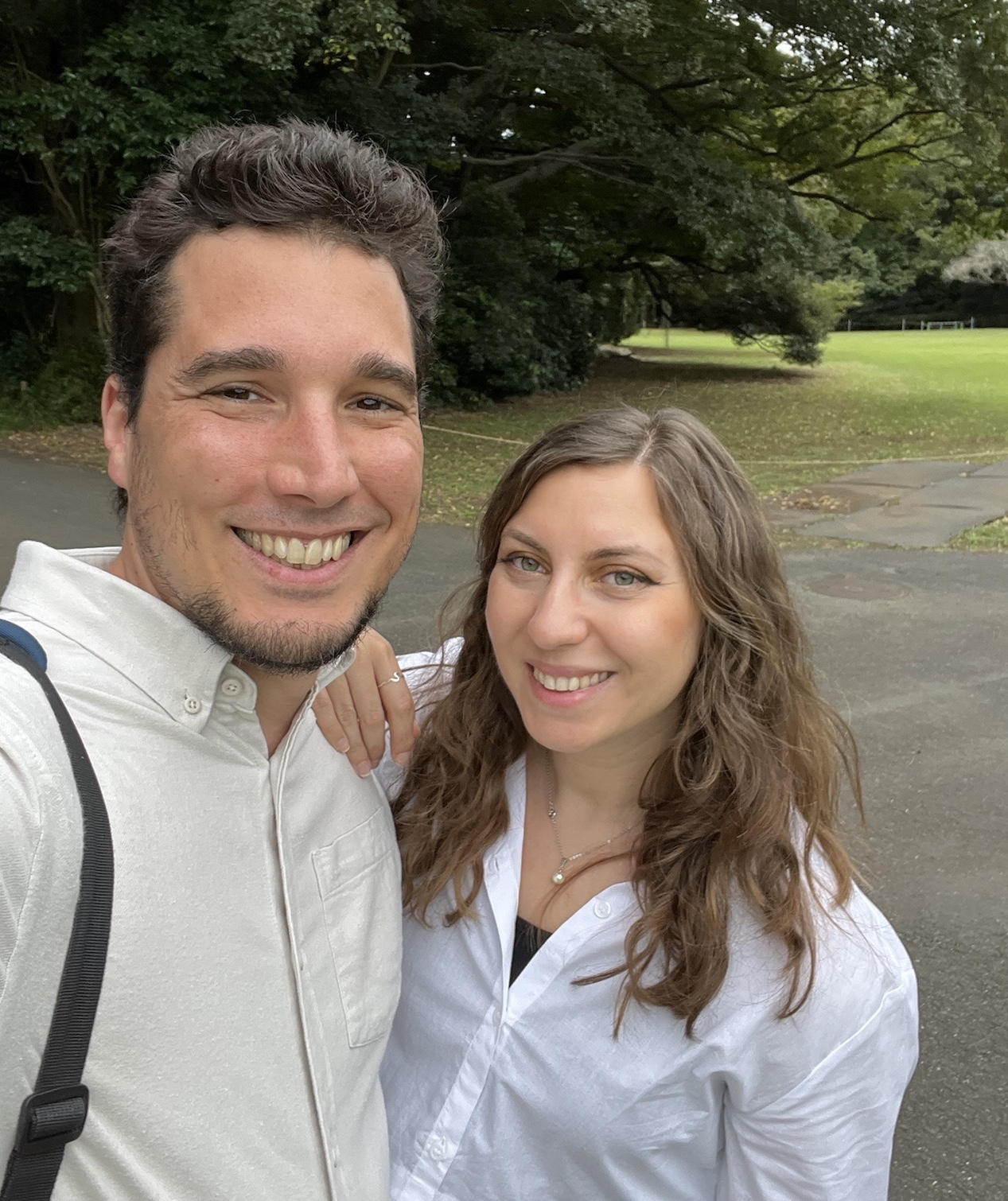
Spend a fun half day exploring the Harajuku area and learn about the best spots here. This tour takes you to shop for clothes and snacks, then shows you the coolest purikura photo booths in Harajuku.
Getting to Harajuku and around
Harajuku Station is conveniently situated on the JR Yamanote Line. It’s just two stops south of Shinjuku and one stop north of Shibuya, with a fare of 150 yen from both stations. This makes it easily accessible and a central point for exploring nearby areas.
A brief walk from Harajuku Station leads you to Meijijingu-mae Station, another key transit point. This station connects to the Chiyoda and Fukutoshin subway lines, providing additional options for navigating Tokyo.
On the eastern side of Omotesando, you’ll find Omotesando Station. This station is a hub for three subway lines: the Chiyoda, Ginza, and Hanzomon lines. Its location and connectivity make it a convenient spot for accessing various parts of the city.

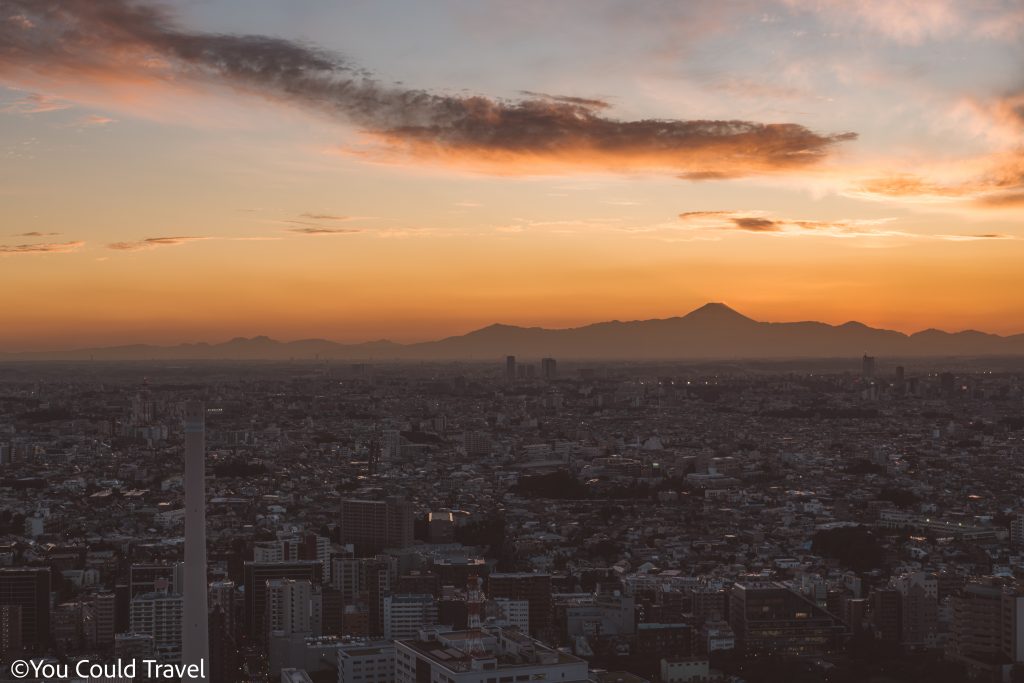
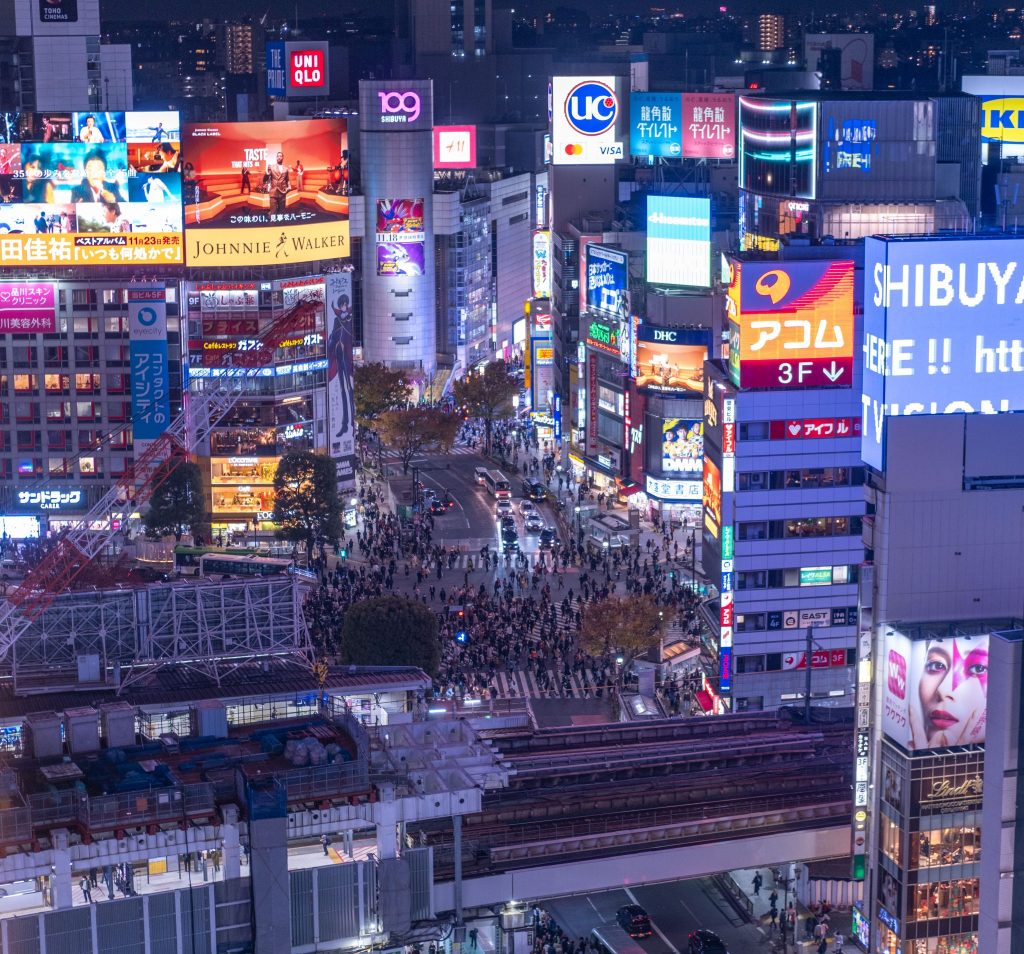
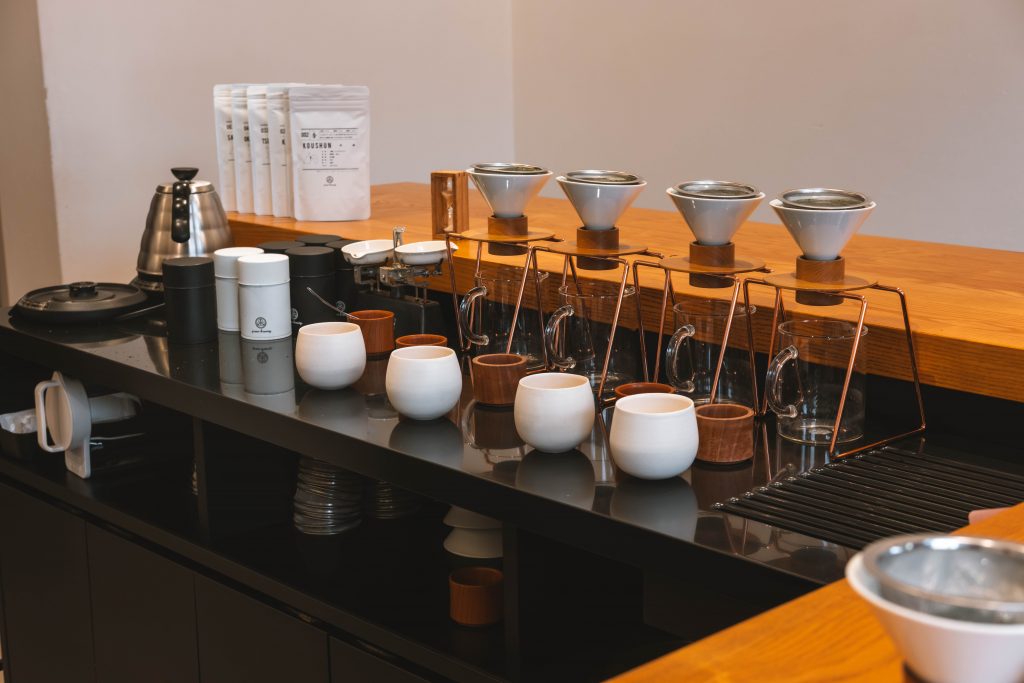
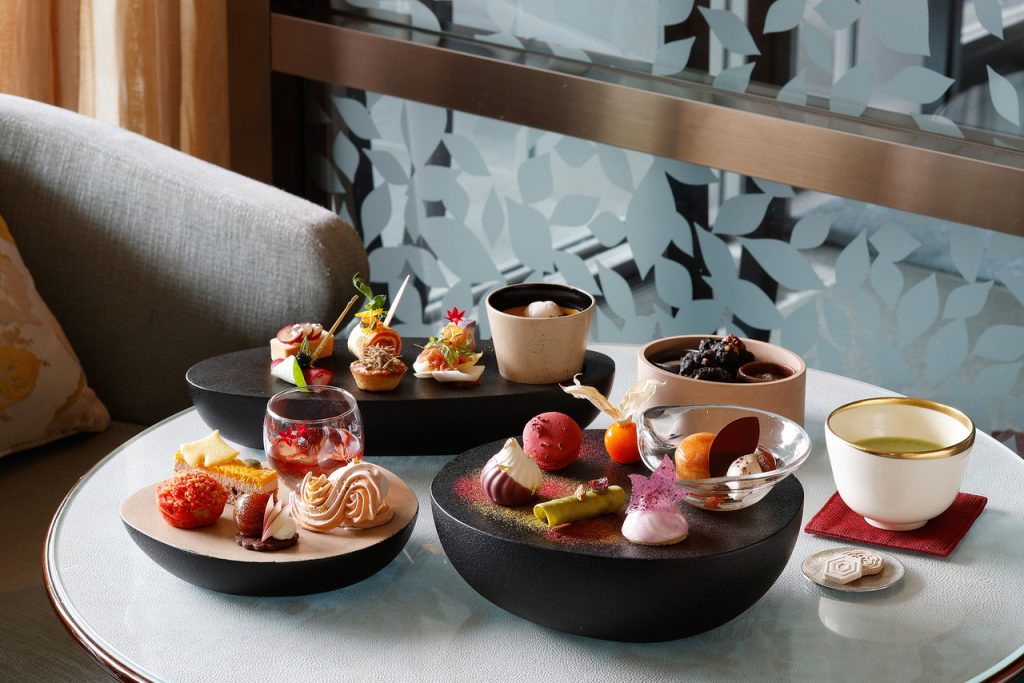
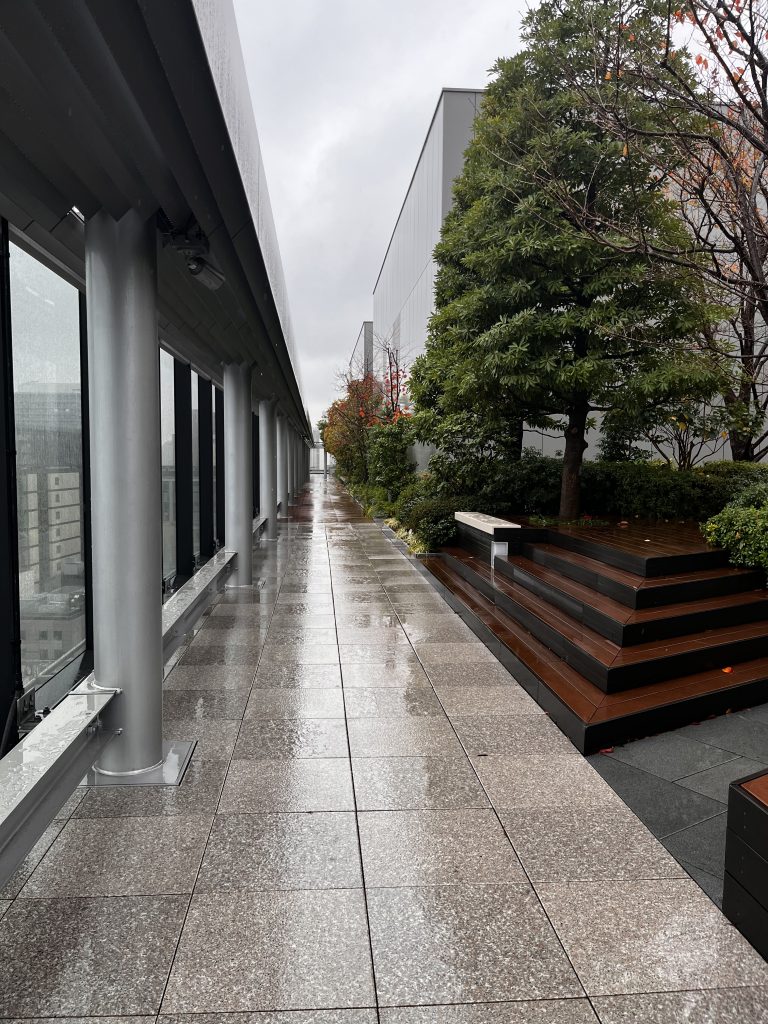
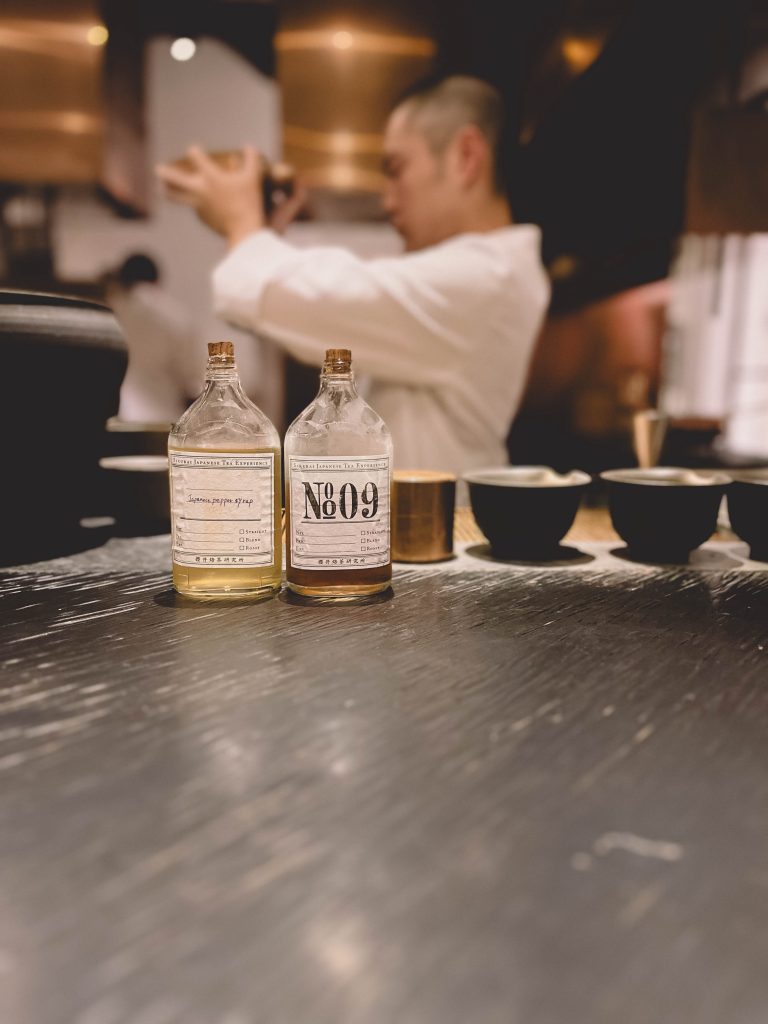


Leave a Reply